Epic Illustrated (1980) #1-34
edited by Archive Goodwin
So this is it: Finally the final batch of Epic Illustrateds, and tomorrow I can start reading the comics published by Epic Comics proper. Properly.
The previous year of EI had been rather uninspiring: Nothing new seemed to be happening, and it felt like the editors were treading water. But they did bring in a new column, and this one is about like computers and stuff.
The Cerebus shorts continue, and as befits the format, they’re jokes.
EI has always had pages that might uncharitably be called fillers, but it really takes off in the final year. I mean, it’s fun that they print some of the contestants at a fair, but… In the early years, we had interviews with relevant people, but I guess that’s too much work now.
Gotta love a cat captain with a suit that has a tail extrusion.
The artist that’s featured in the most issues of EI is definitely Rick Veitch, which was surprising to me. I mean, not that they’d do Veitch (every thing he delivered was interesting and fun to read), but I vaguely thought that he was doing other things around this time, but I guess my timeline is off.
Robert Rodi wrote a very amusing parody of barbarian fantasy stories in a previous issue of EI, and this is a continuation of that. It’s still amusing, but this time (illustrated by Kent Williams), it’s almost like an actual story. I guess that’s always the danger of letting a parody run off with you: You may end up becoming what you’re making fun of. But it does worl.
Huh! I didn’t now that Bill Sienkiewicz had adapted David Lynch’ Dune movie? *quick google search* Indeed he did. It was published as a three issue series by Marvel and then collected in 1985… and never reprinted? Totally weird. But I’ve now bought a copy off of ebay. Perhaps it’ll become clearer why it’s gotten dropped into a black hole after reading it.
Yes… something… like… iambic pentameter.
I’m guessing that sales of EI was dropping like a stone, and that John Byrne was brought in as a last ditch attempt at shoring up the sales, but six pages of not-very-much story each issue doesn’t really help. Especially since it was originally projected as a six part story, but then progresses glacially that it has to be expanded.
Er, yes. No manners. But Phil Hale does a pretty impressive Frank Frazetta.
I dreaded this story: It’s based on the cover of the issue (not the other way around), and it’s drawn by Rick Buckler. (And written by Goodwin himself.) But they take a rather tongue-in-cheek approach to the whole thing, and it turns into something rather entertaining.
In the end, I think there were just four? ish Cerebus shorts in Epic Illustrated. For some reason or other, I thought it was a more substantial number of pages… They’re fine.
Excerpts from portfolios continue in most issues.
But by issue 31, it’s pretty clear that they’re mostly just clearing out inventory pages and padding the rest of the pages. For instance, we get a totally pointless re-introduction to Dreadstar and the Odyssey thing Jim Starlin had going on. I mean, that in itself doesn’t ruin an issue, but then…
… the feature on the page following is an excerpt from a graphic novel that Marvel is going to publish, so that’s something Marvel gets cheap, too. Some padding is fine, but it feels like there’s less and less to read in each issue.
But there’s still Rick Geary, so it’s hard to be too annoyed.
The final year has very few external advertisers. While the first few years had Champale and … that Yukon whisk(e)y thing in almost every issue, I think in this issue we have an ad from a book club, and then all the rest of the ads are from Marvel. I take this to mean that the circulation of Epic Illustrated had sunk so low that nobody significant wanted to take out ads there any more.
Jon Muth and Kent Williams collaborate on a little story. It’s very pretty.
Er, uhm… that’s an impressive hairdy… and a really tiny head…
Despite the magazine being in an obvious death spiral, there’s some good stuff. This story by Edward Bryant and Carol Kimball was genuinely scary. It’s perhaps slightly unfortunate that it’s in a magazine like Epic Illustrated, because you know there’s going to be a supernatural twist, and if you can’t guess what it is based on these two pages…
Still: Really exciting, and I love the storytelling chops on display here. The pacing is just perfect.
I don’t think Bo Hampton had done anything for EI before, either? His story has a time-travelling time twist that’s been done a million times before, too, but the way he gets there is all his own. And with gorgeous artwork.
OK, that’s obviously not for me, but does that magazine actually exist!? They deliver?
We get a nine page preview of the contents of the magazine, so if it doesn’t exist, it’s a pretty extensive joke. Yes, padding the pages is the most important thing at this point.
Apparently they should have aimed it more at wimps (and possibly geeks):
Volume 2 ran eight issues (Oct 1985 – Dec. 1986). It featured adventure and action stories with a military fiction slant.
Dave Sim (and Gerhard) do a little gallery of Cerebi.
Rodi had written a couple of illustrated stories for EI before, but I think this is his only honest-to-goodness comic here? Illustrated by the wonderful Lela Dowling. Of course there’s a twist ending, but instead of a normal one, we get a post-modern one, which is fun.
OK, I guess that’s not an outright scam. I mean, “the landlord let us stay another month” can’t be fake?
Clearing out the inventory sometimes has positive effects: We get two Dr. Watchstop strips in one issue. That’s never bad.
Apparently it had been announced elsewhere that EI was cancelled now? The previous issue hadn’t mentioned it, but there’s letters in the next-to-last issue that talks about it…
Oh wow. That’s a good two-page spread by John Totleben, and not in his usual style, either. And they even printed it on the centre two pages, so that we don’t get a misalignment between the pages. Awesome.
Another P. Craig Russell piece I haven’t read before. I wonder whether he’s collected all these bits and bobs by now? This one is dedicated to Wally Wood.
I haven’t mentioned the biggest serial that ran in these issue? The seemingly interminable Toadswart, which I talked about here in the Eclipse blog. But I didn’t re-read it this time around.
Johnny Badhair by Phil Hale is totally insane. And you can’t help love this Salvatore thing he’s got going on.
It sounds like they’re pulling out all the stops for the final issue! I had assumed they were going down with a whimper, but now I’m all excited.
This is a pretty strange way to say “the sales tanked”, isn’t it? “with […] reader interest […] increasingly harder to sustain”. I think that means “the sales are in the toilet”, right?
Oh, geeze; they’re not even going to finish the Galactus serial in EI? Readers will have to re-buy it to get the ending?
Oh:
Despite having nine chapters published, the story came to an abrupt halt when Epic Illustrated was cancelled because of poor sales. Unfortunately, the story lingered in limbo and with so much change in Marvel continuity, and Byrne has declared it “pretty much dead at this point.”
Shame. Shame. (I mean, I didn’t think it was a very interesting story to begin with, so I don’t care, but it’s a pretty shabby way to treat the readers.)
So this is the final page of the serial.
Huh. I wasn’t the only one that thought that issue #31 was particularly bad.
Oh, wow. Alan Moore! His first and only story for EI, and illustrated by Rick Veitch. It’s a good little O Henry type of thing, but spoiler: Bi guys are apparently the absolute worst. It’s very Alan Moore.
The cover of the final issue promised us a good final issue, but that’s not the case. Half the issue is filler. For instance, we get some winners from another contest at another fair.
We get a look at some Windsor-Smith works that are in progress.
The cover promised us Berni Wrightson, and we get him, but it’s work that had been sitting in a drawer since 1977. For good reasons.
It’s not a total loss. We get a pretty fun classic Goodwin/Williamson strip.
Jo Duffy, the managing editor of Epic Illustrated, writes a better goodbye to EI than Goodwin did in the editorial.
Roy Thomas does a homage to Robert E. Howard — a story about the day he killed himself. It’s not bad.
And then we go out on a Bill Sienkiewicz story he’d drawn two years earlier (according to the signature), so it had apparently been sitting an a drawer, too? But, hey, it’s Sienkiewicz (the first comic written by himself), so you can’t complain too much that the story doesn’t really go anywhere much.
THE END.
Finally.
It sure took some time to read these 3400 pages.
As a magazine, it had a very clear trajectory. The first couple of years, they were learning and experimenting and getting better every issue. Then there were two years when the magazine was a really fun read: Every issue had a good mixture of veterans doing serials and the like and new, exciting things to surprise and delight. And then the final two years where things got sloppier every issue, with more fillers, few new discoveries, and a general loss of interest on all parts, I think.
From an interview with Veith in Amazing Heroes #171, page 26:
Epic Illustrated was just beginning
and they were looking for new, inter-
esting, off-the-wall, highly-illustrative
stuff. We were able to adapt to that
and a lot of us got gigs there.
AH: You were in virtually every issue
of Epic, how did you manage that?
VEITCH: I was just there all the time
with a new story idea. I think one of
the reasons I got in is because I had
the airbrush. One of the things I’d
taken on my own to learn while I was
at the Kubert school—it wasn’t taught
at that point although I think he does
have a course now—was to learn how
to operate an airbrush and incorporate
it into illustration.. .comics illustra-
tion. There weren’t that many people
doing it.
The look of the airbrush was some-
thing all the art directors who had high
quality printing wanted. I was able to
go in there and sh(N’ them airbrushed,
high-finished illustrations and say,
“Hey listen, I can do comics with an
airbrush!” And they’d go, “Yeah!” So
I found a ready market for my stuff
at Epic. I did a slew of short pieces,
then spent a year painting “Abraxas
the Earthman” for them.
AH: You just did stories for them until
the Heartburst graphic novel?
VEIIUI•. Heartburst originally was
designed as a three-part Epic story, but
by then, their inventory had grown so
lace that they decided to put it out
as a single graphic novel.
AH: How’d you feel about that?
VEITCH: 1 felt really good because
there’s a slightly better deal with the
royalty plan doing a Marvel Graphic
Novel. To this day, I still get royalty
checks once or twice a year—it’s still
selling copies out there somewhere—
so I have no complaints at all.
AH: Did you own everything you did
for Epic?
VEITCII: The Epic magazine deal
was excellent. It was very simple; I
kept the copyright and trademarks and
they kept anthology rights for a period
of five years or something like that.
It was very minor the things they kept.
So now I own a whole backlog of,
fully-illustrated Epic material which
includes “Abraxas and the Earthman”
and tons of short stories and stuff that
ultimately I will print under my own
imprint of King Hell Press.
But what did the critics think?
R A Jones writes in Amazing Heroes #55, page 112
Epic #25 proves’ to be a very
uneven effort’ as have many of the
preceeding issues.
Sure.
David Stallman writes in The Comics Journal #54, page 38
In his editorial in this first issue—
which, incidentally, is the most
bombastic and pretentious nonsense
this side of a campaign speech—Stan
Lee states, “In two short decades ,
Marvel Comics have revolutionized
the once-simplistic artform known as
comic btX)ks . ” This pompous statement
not only overestimates Marvel’s
importance to the med*um, but also
ignores the fact that over the last
decade Marvel has grown increasingly
counterrevoluåonary toward change.
Nor is Epic “The Next Plateau,” as
Lee goes on to say for the only
creator in it with a handhold on that
plateau is Jim Starlin. The rest in
Epic—with only a few exceptions—
have forgotten their climbing gear.
Epic does have some good work ,
but the worst and most affected piece
is the sententious Silver Surfer tale,
“The Answer,” which features eight
pages of Stan Leets shallow and
ostentatious ontoloöcal views. To
anyone who has read anything by a
true inquiring philosophical writer ,
Lee’s dry bromides leave a stench of
hucksterish artificiality in the mind.[…]
“Convert , ” by Ernie Colön, is a
rehashing of the old missionary—and-
cannibals plot in which the cannibals
eventually wind up making an entree
out of the missionary. assume it
was included to add diversity, but all
it adds is thc standard fare of DC’s
knee—jerk Time Warp.
As for Carl Potts’s Topaz; it is a
three—page set—up anci punch line
that is three pages to’ long. find
nothing worthy of analysis, let
alone praise; the same applies to
“Elfspire,” the obligatory sword-and—
sorcery text-and—illustrations that
would have been better left out.
Four other features are not quite
as hopeless, but still suffer from
some problems.
I gotta start saying “stench of hucksterish artificiality” more often.
OK, that’s it! Epic Illustrated marathon over! Next: Dreadstar.
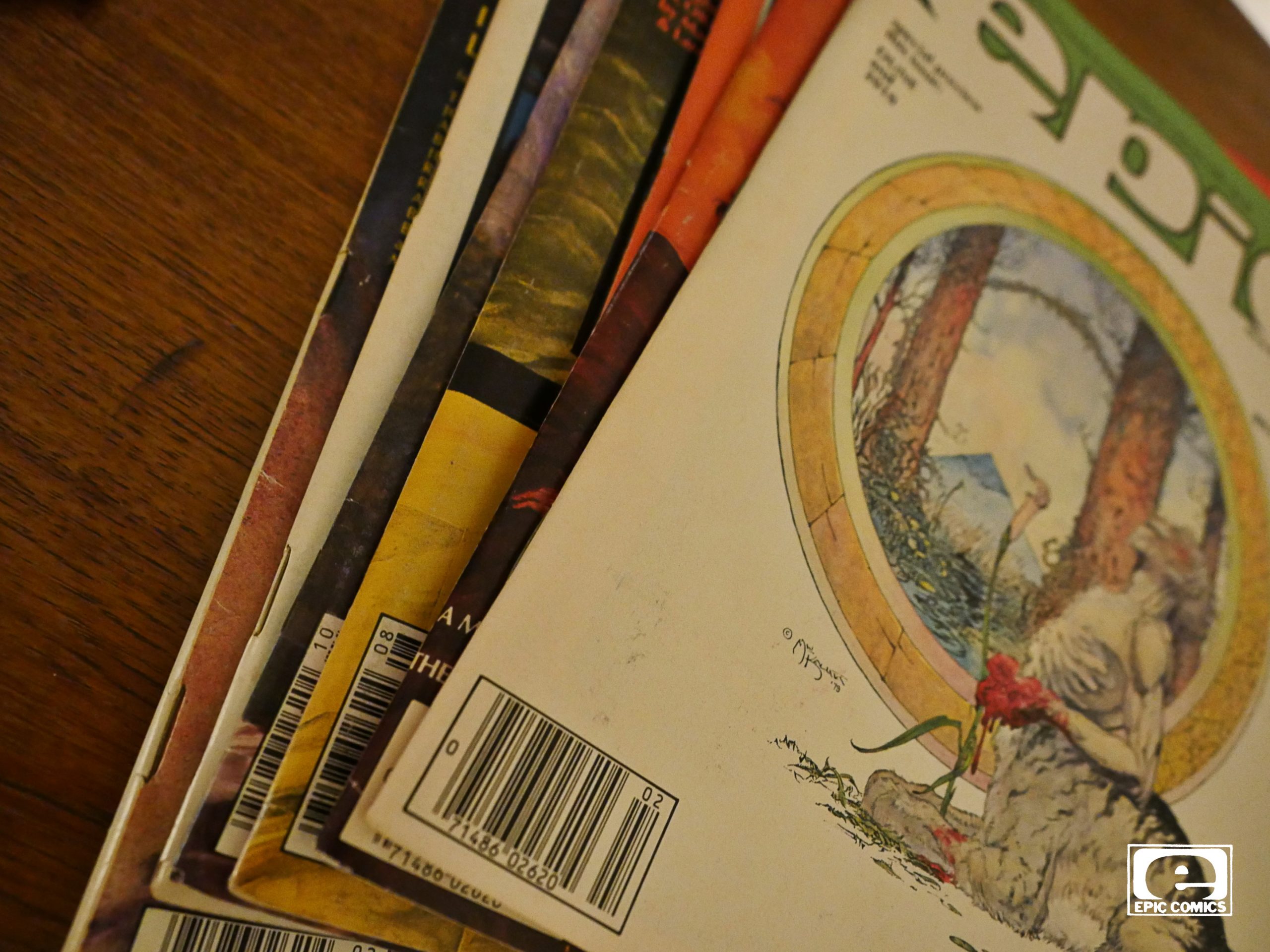
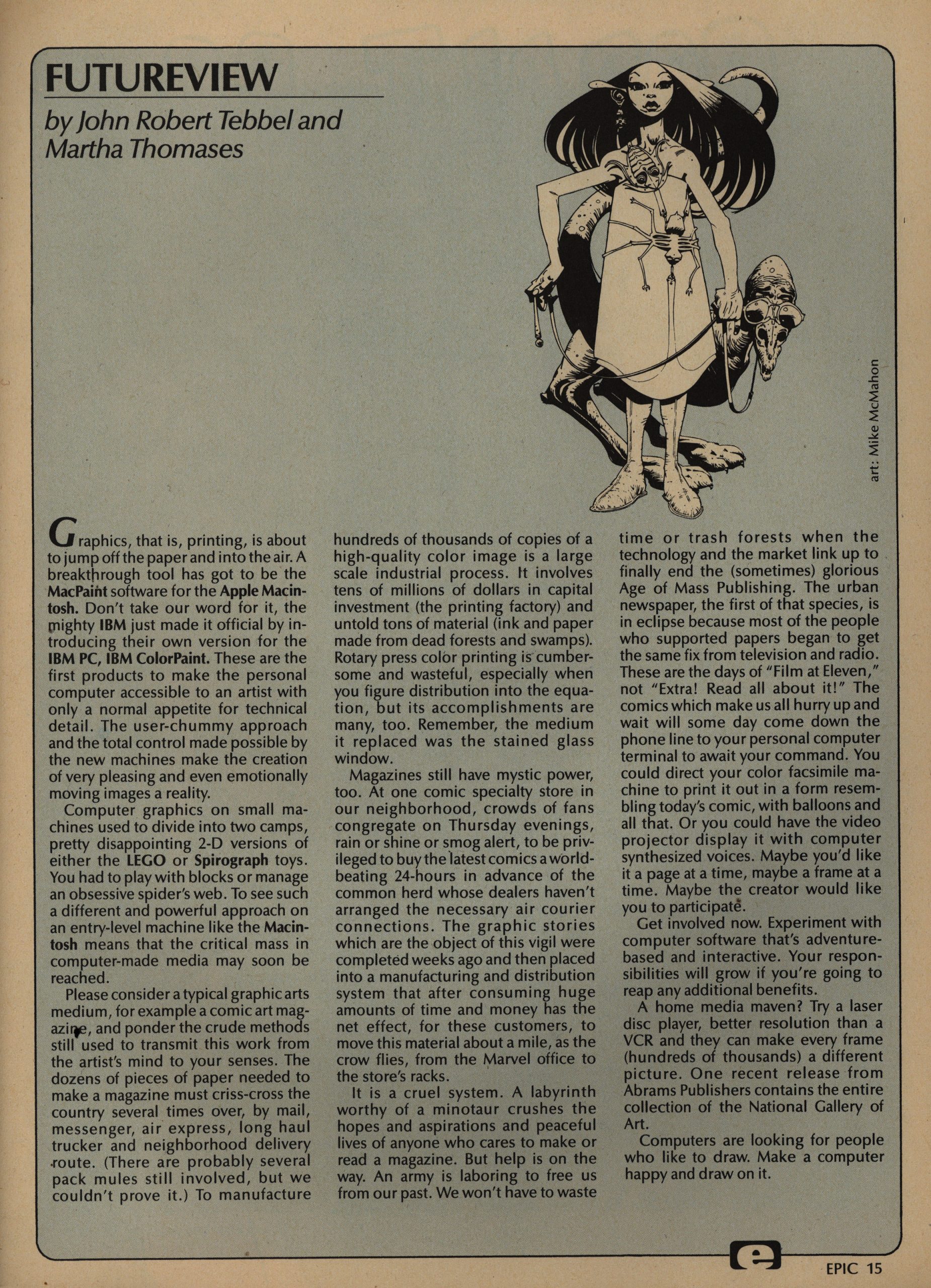
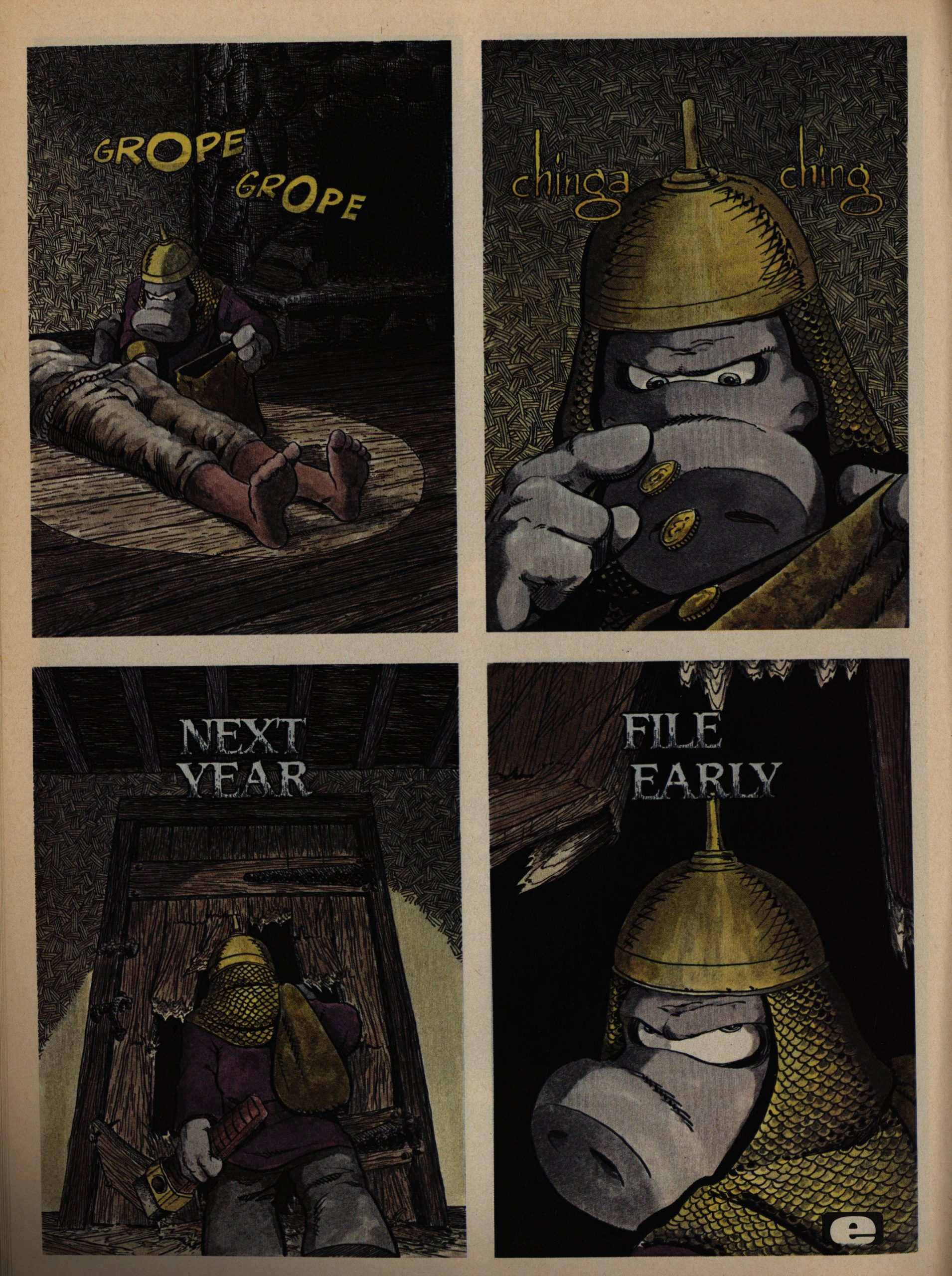

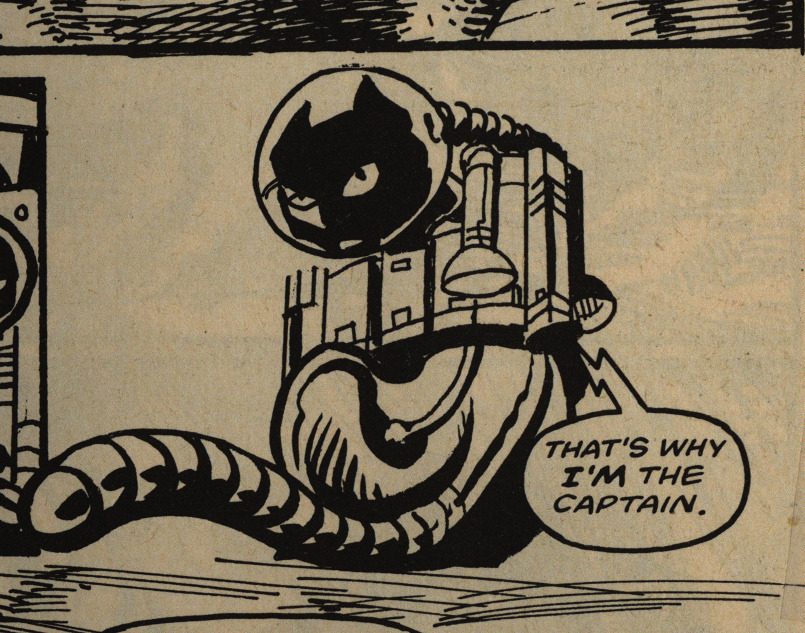
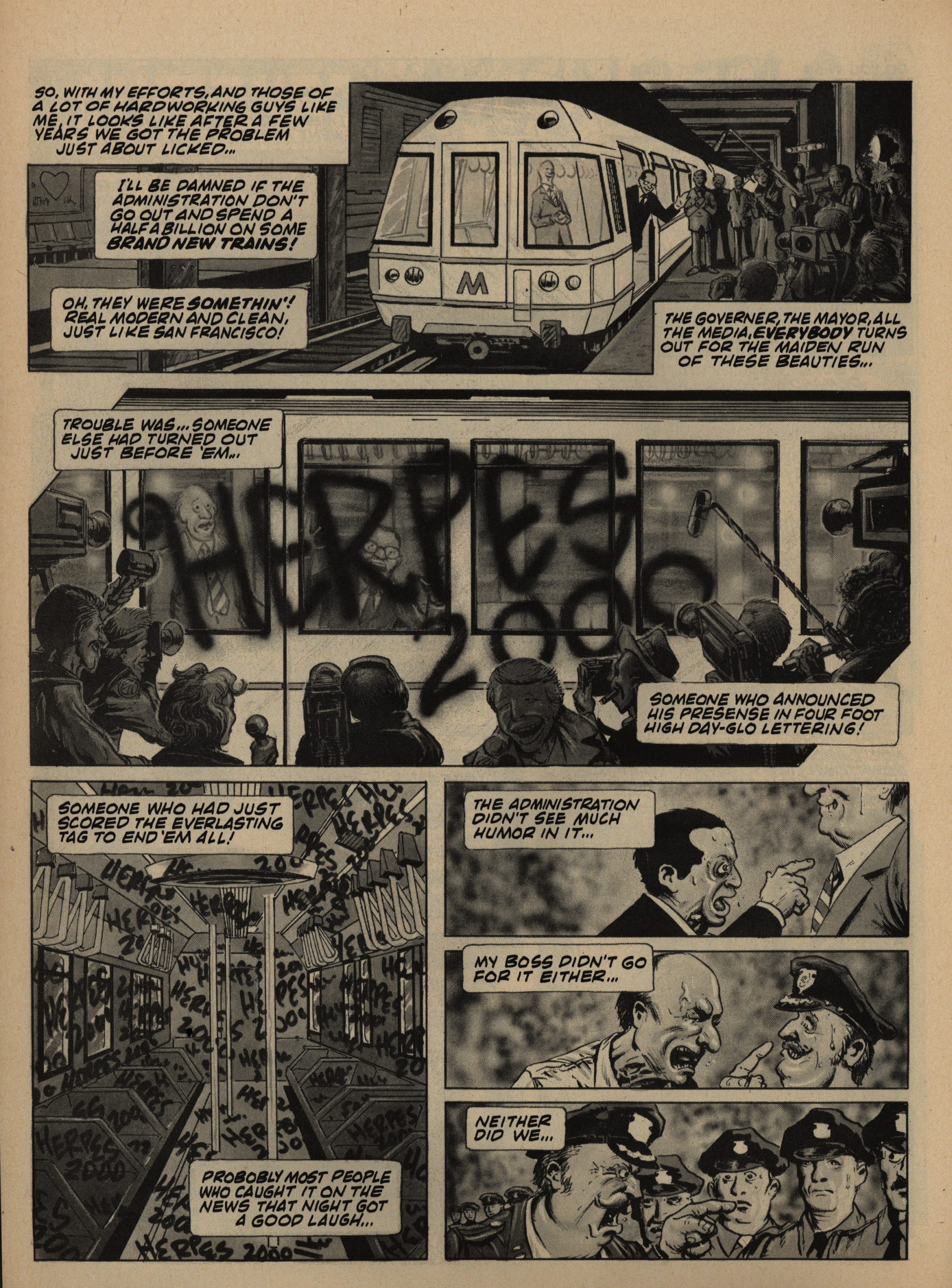
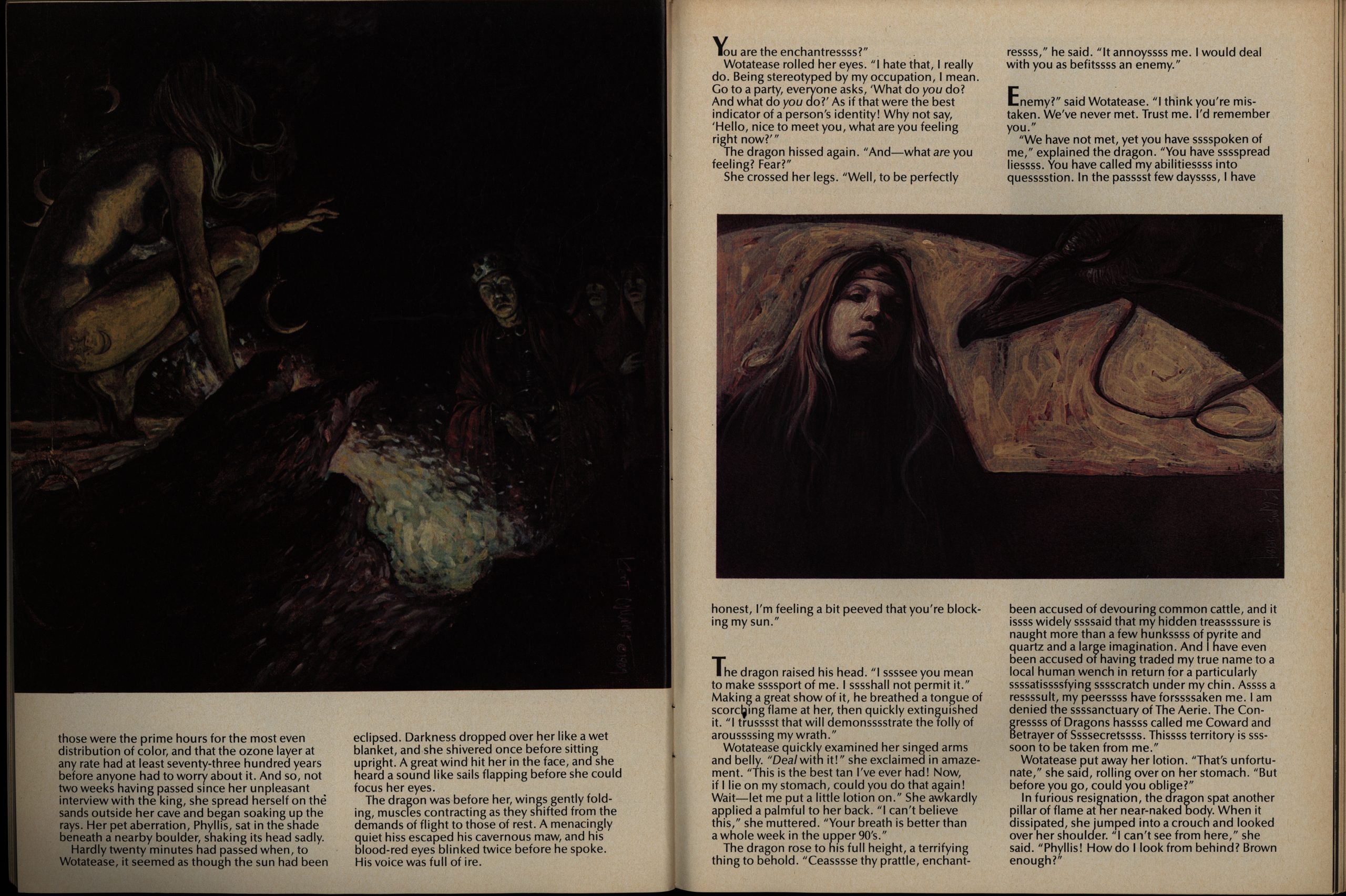


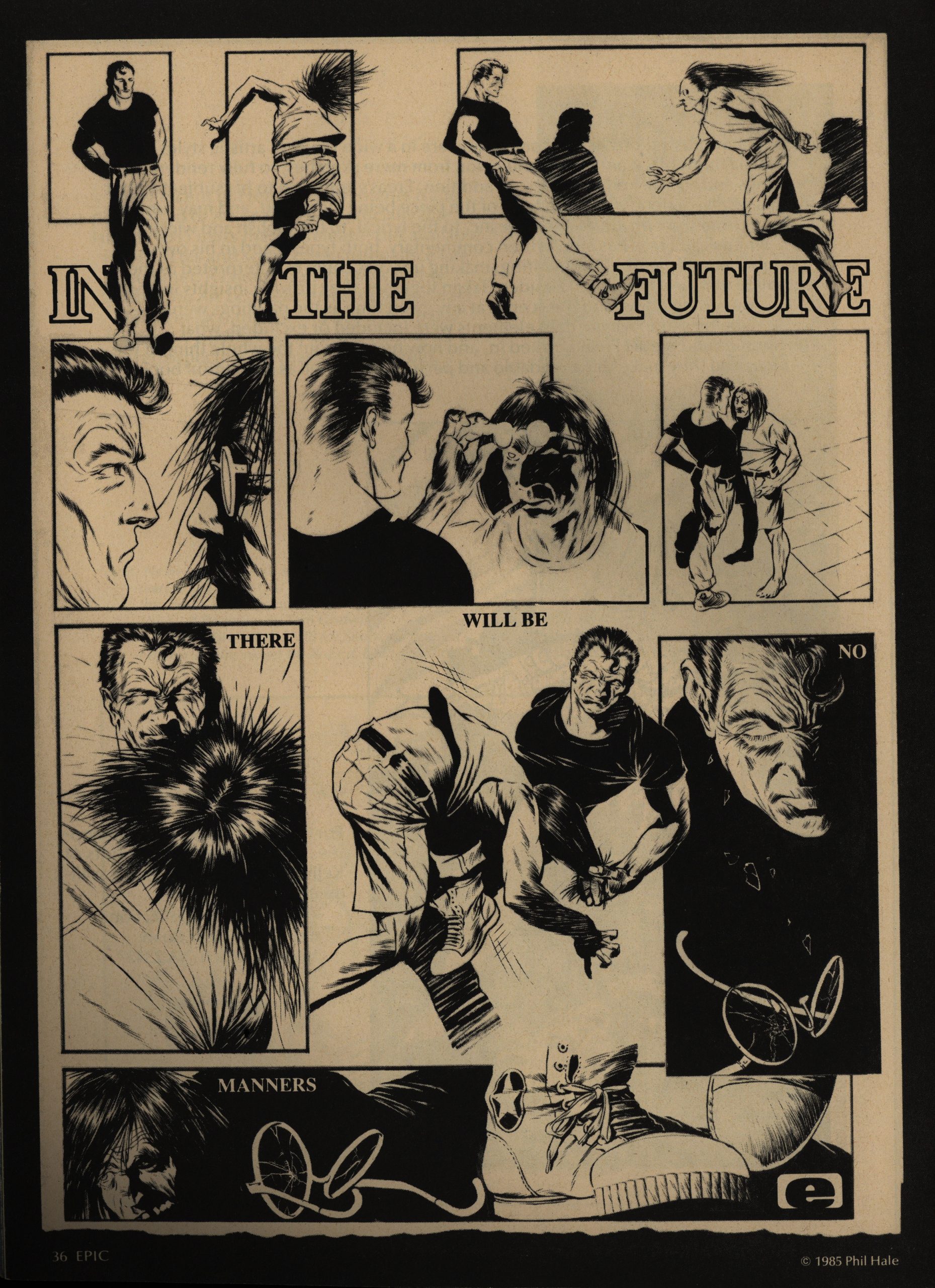
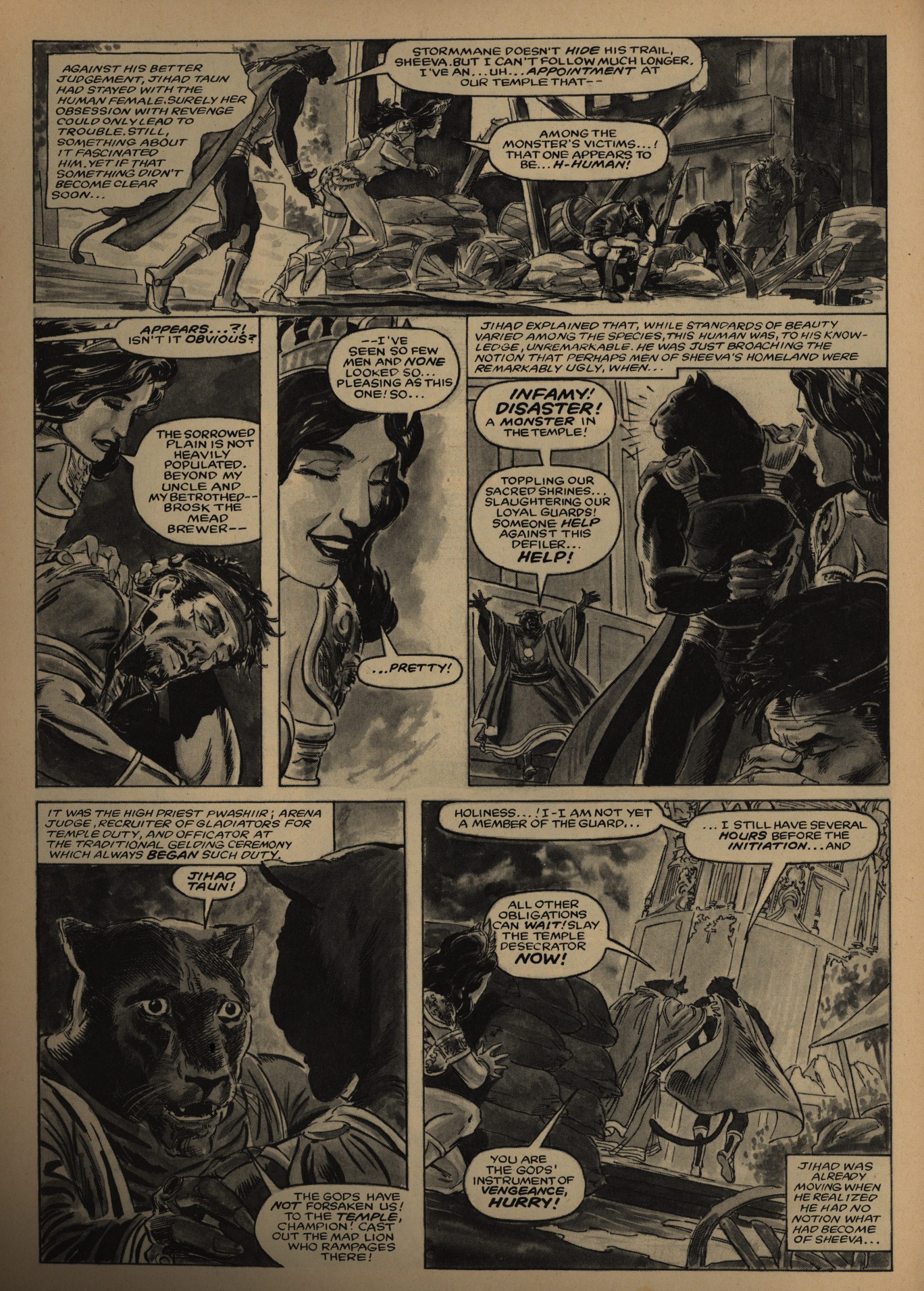
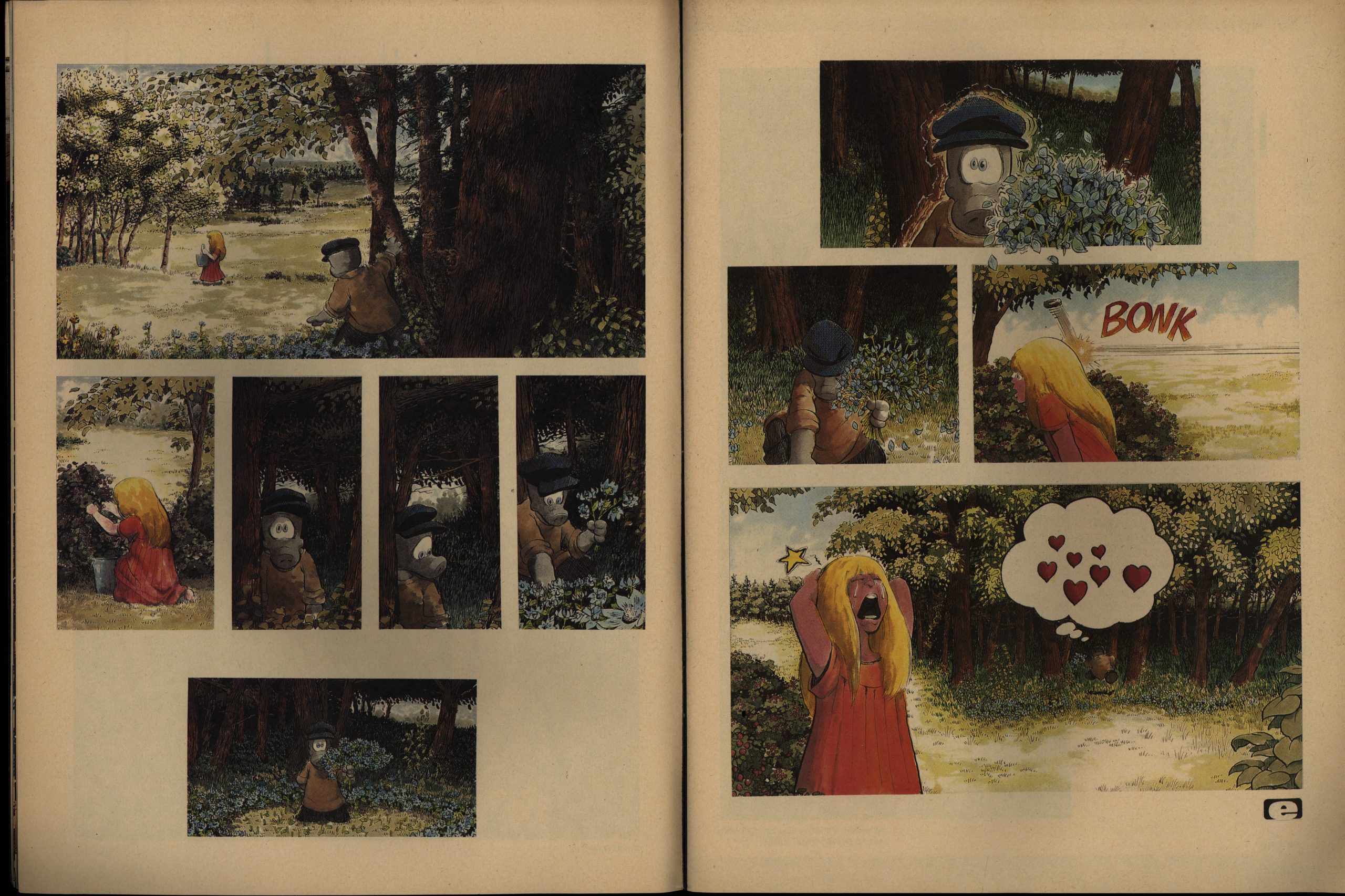
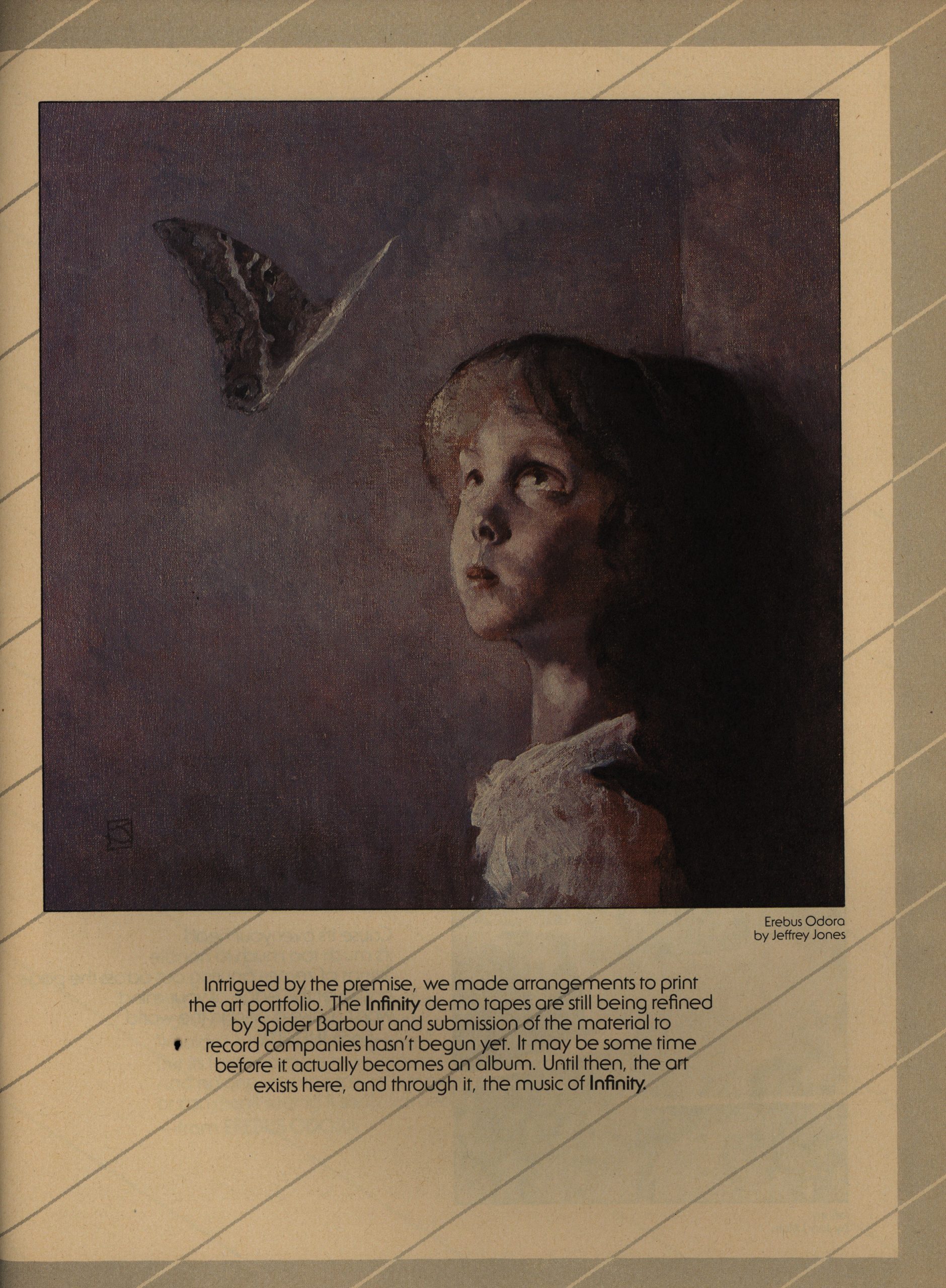
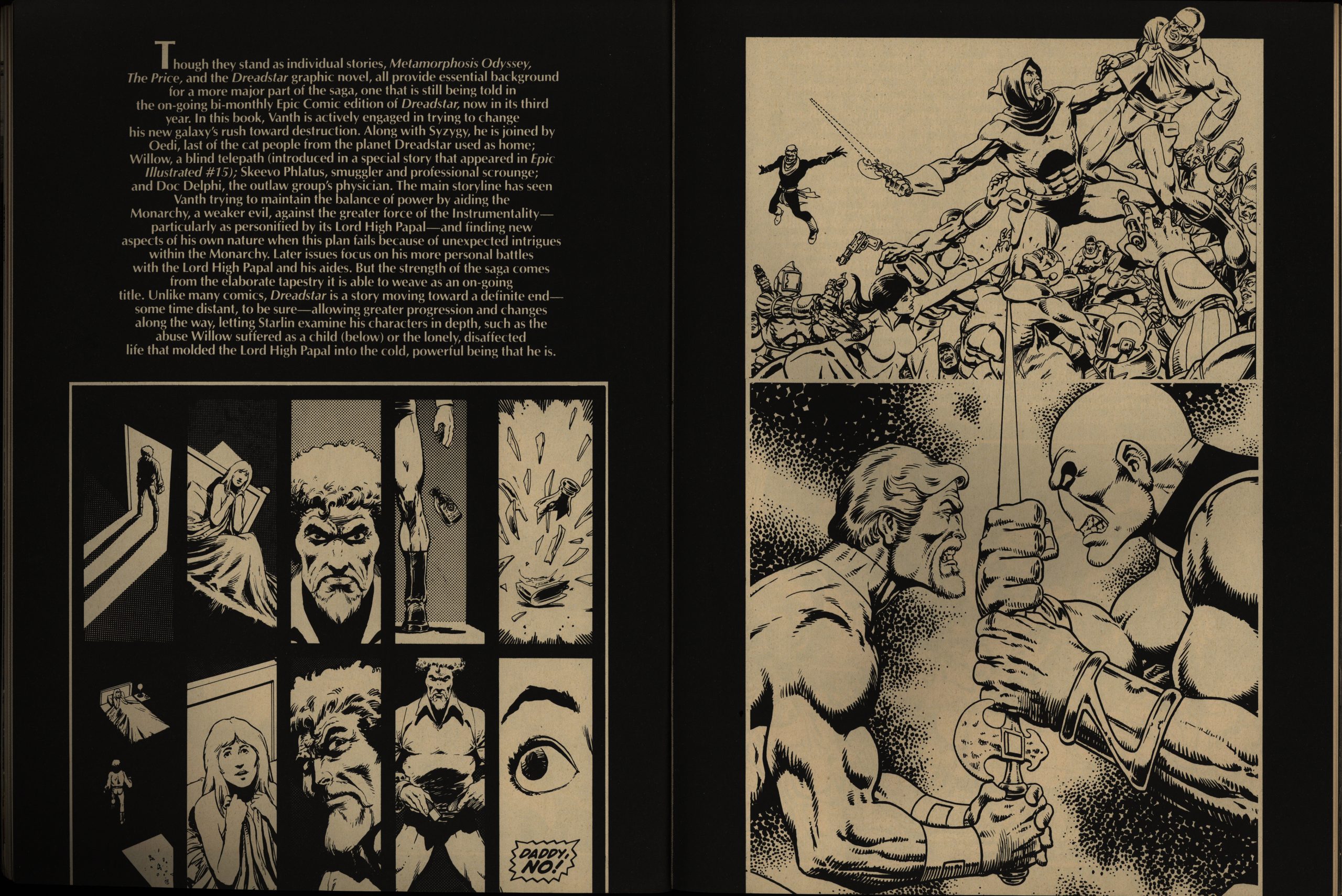
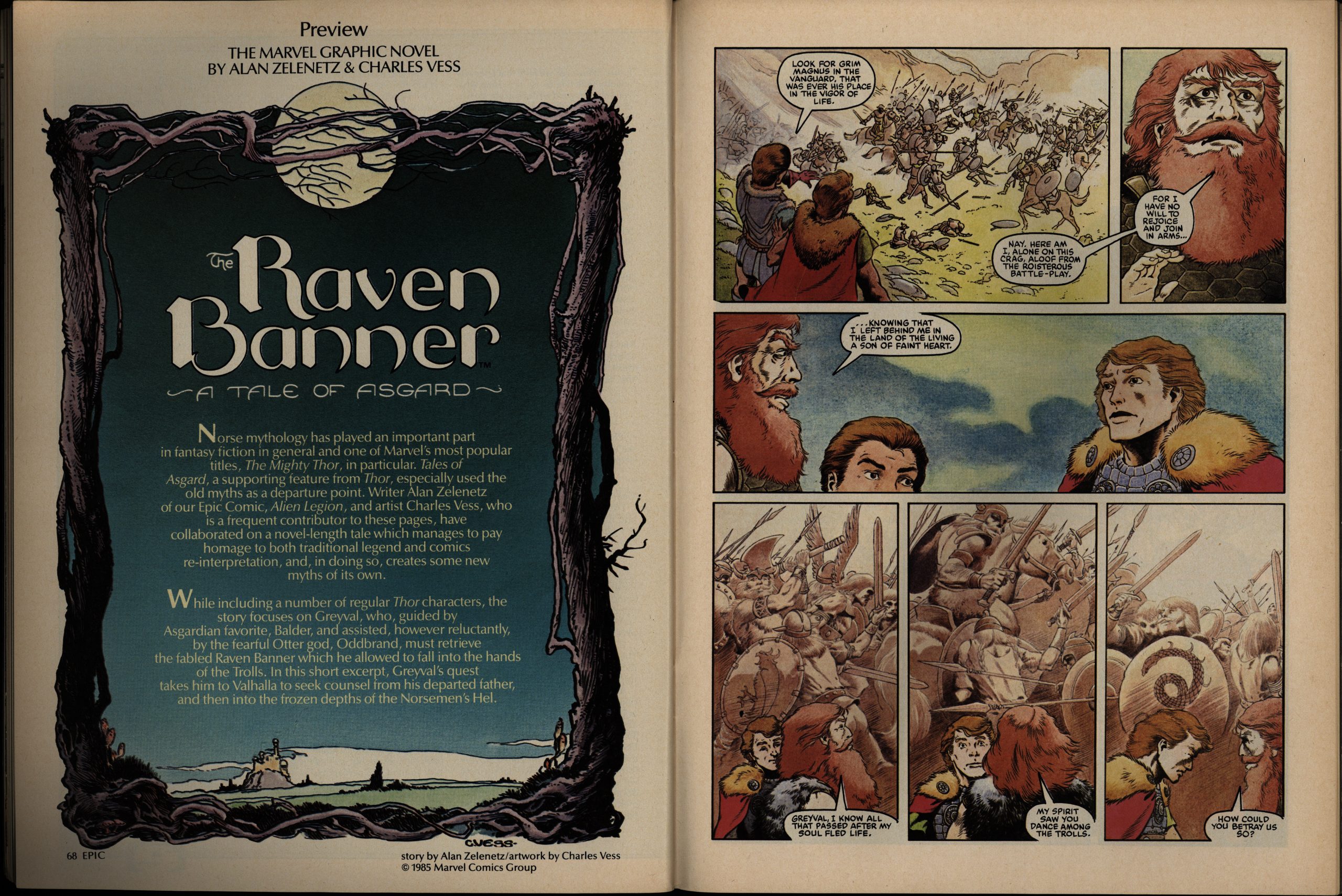
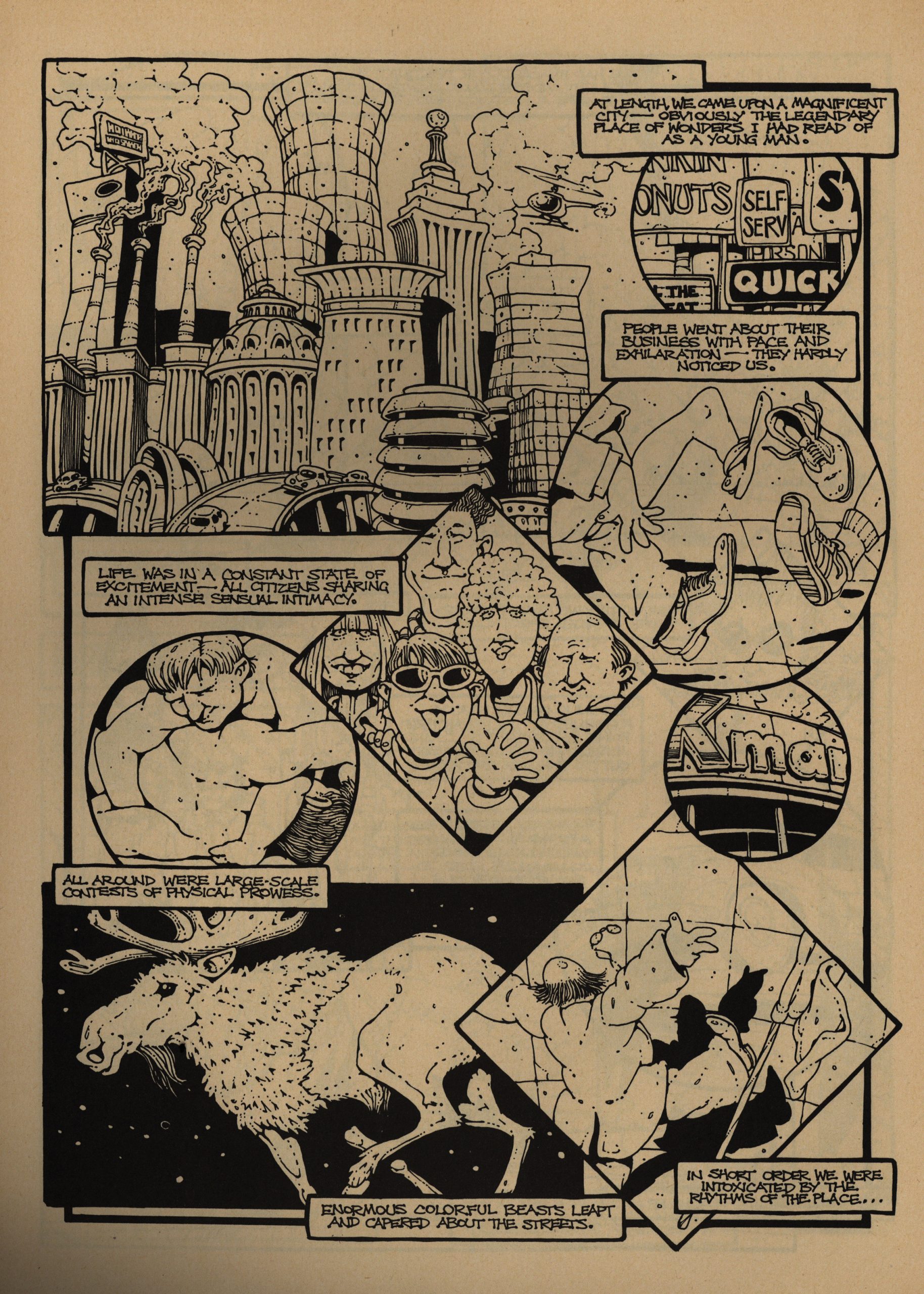
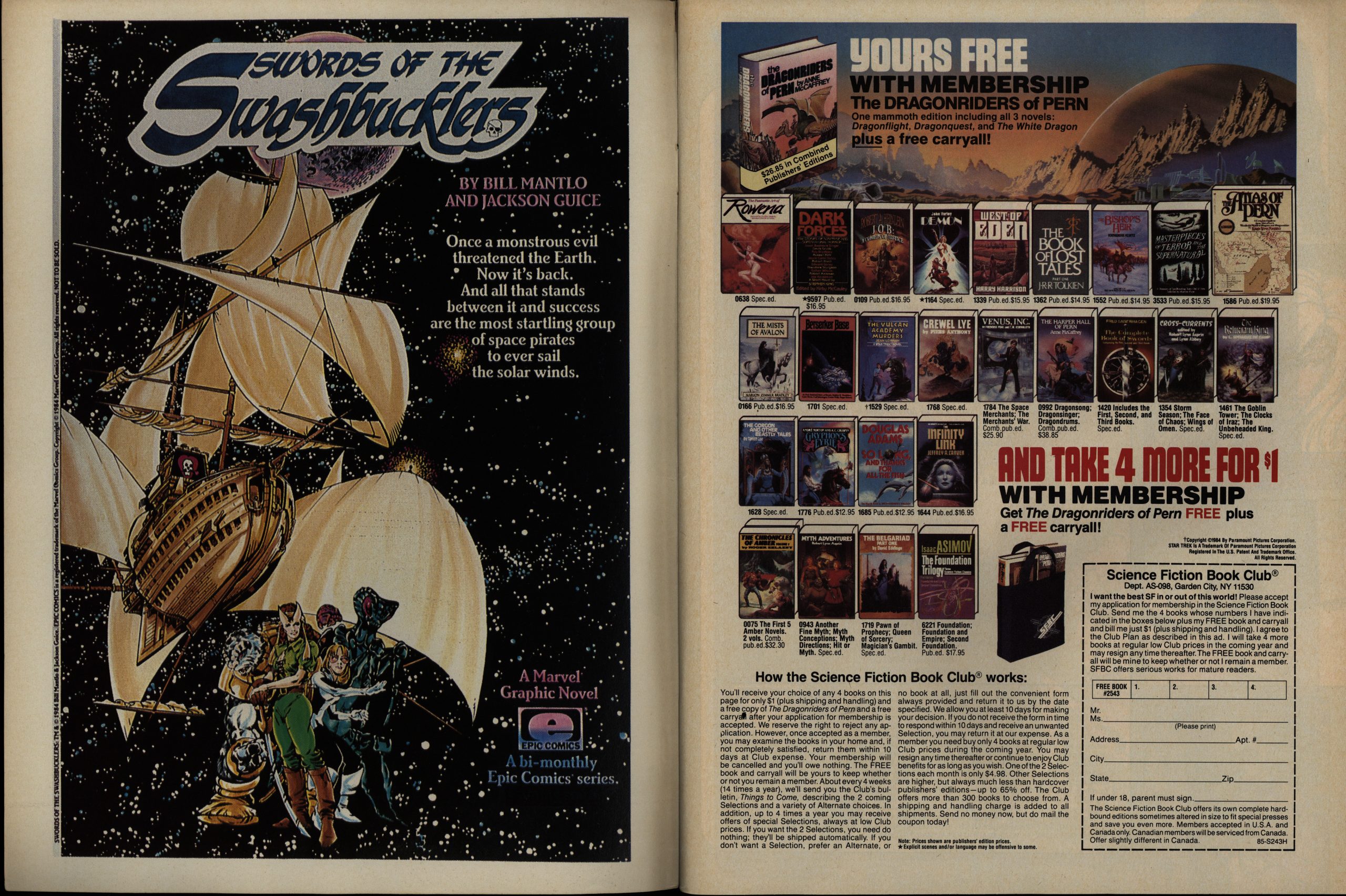
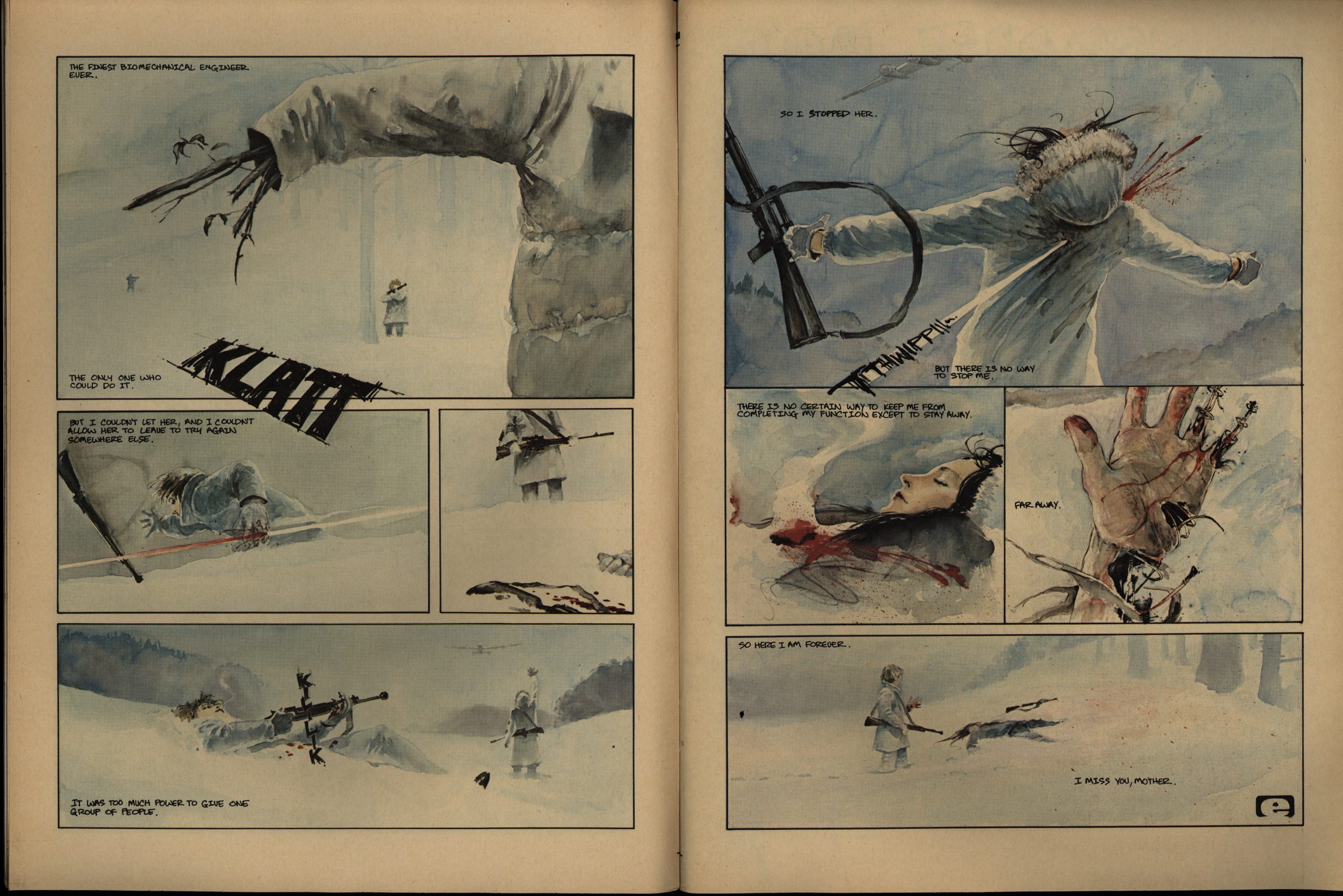
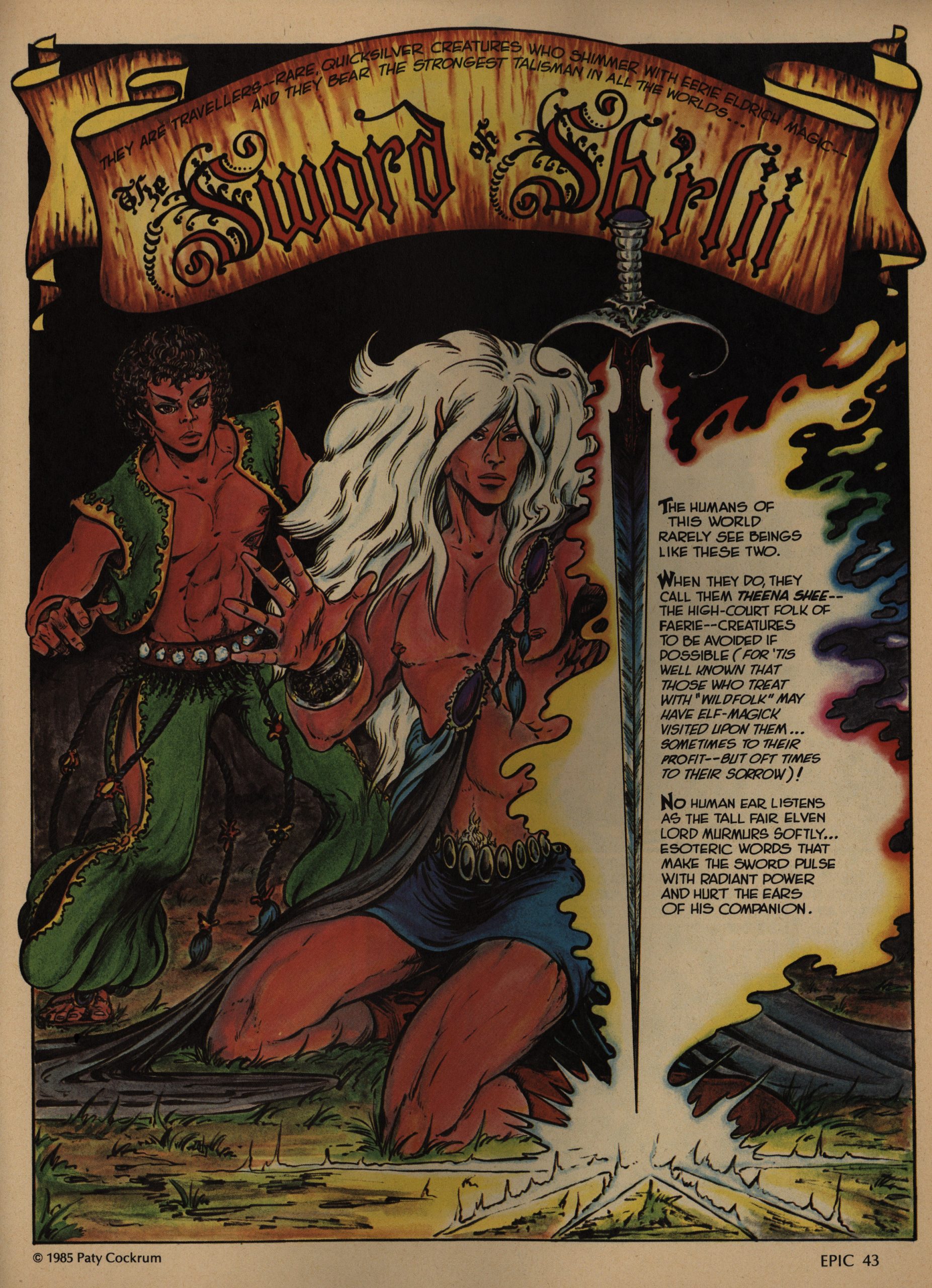
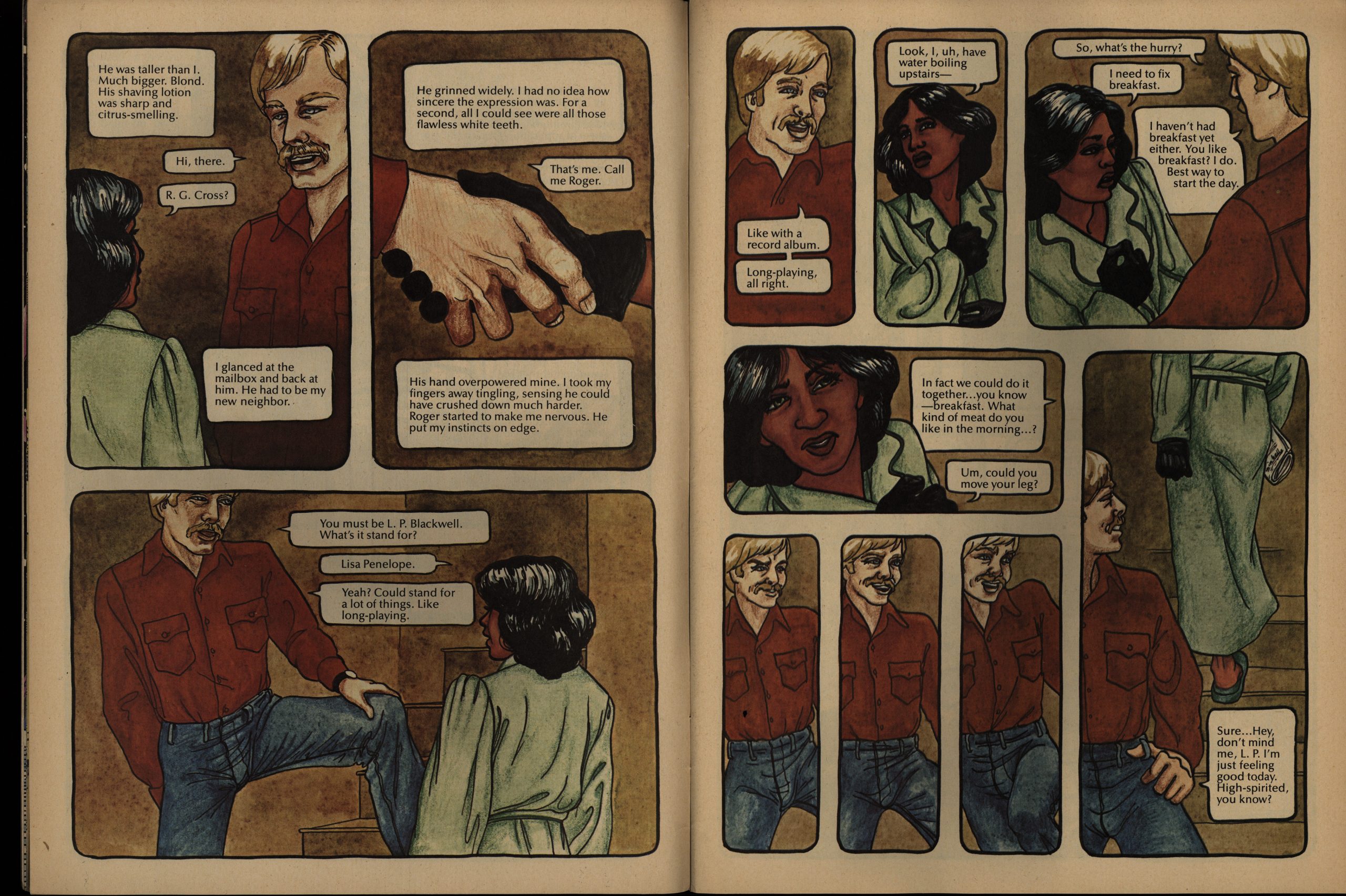
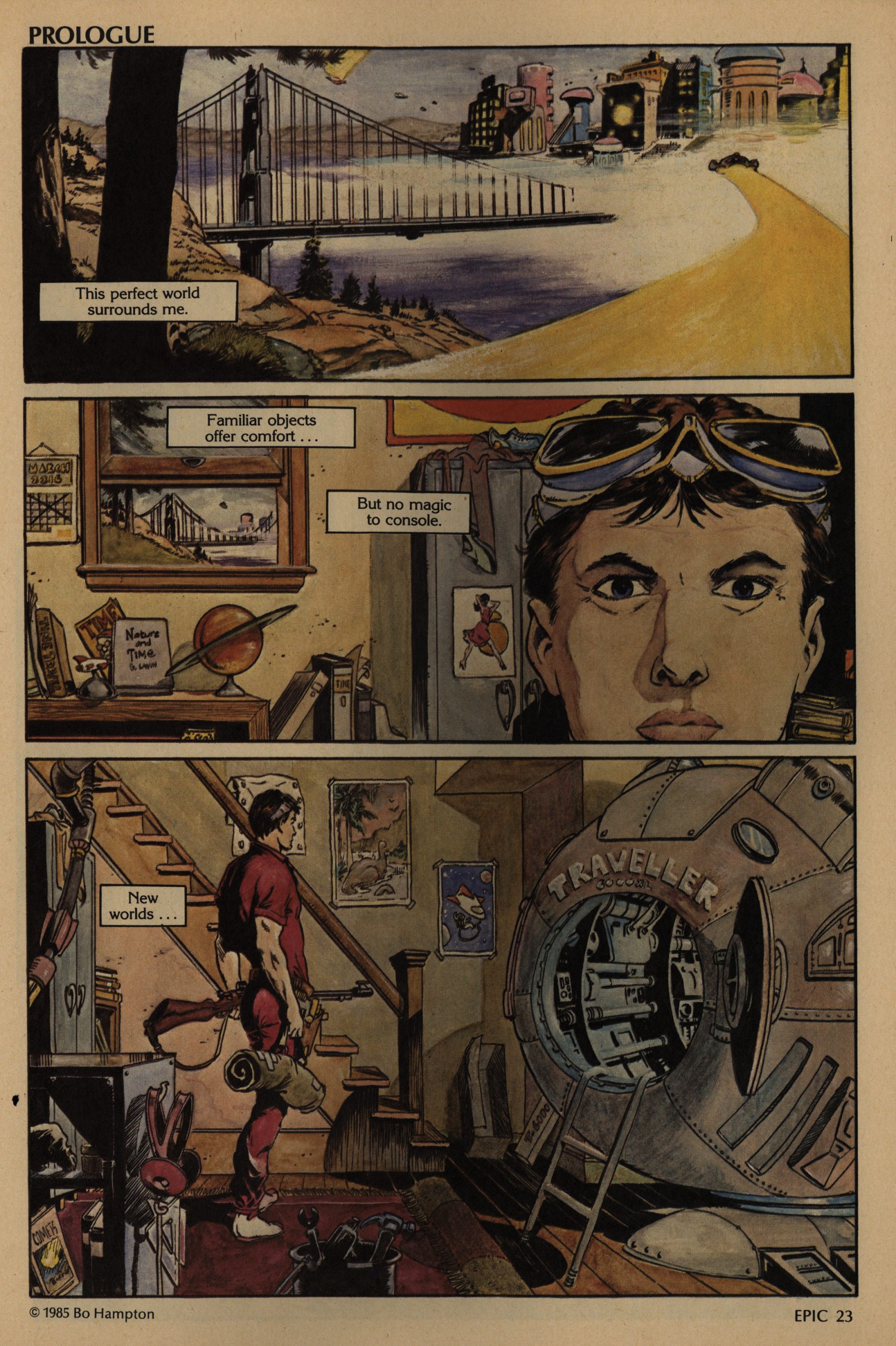
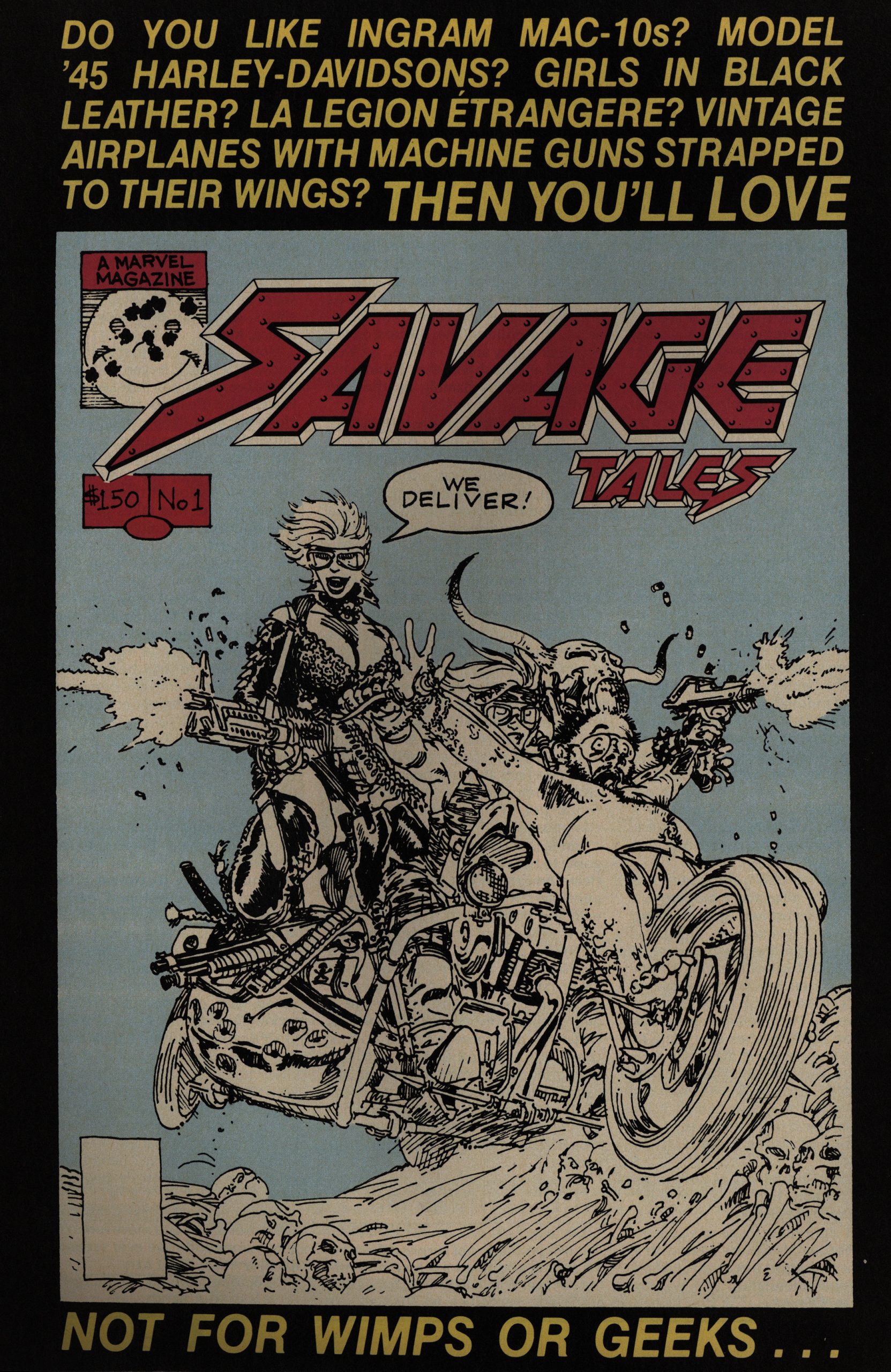
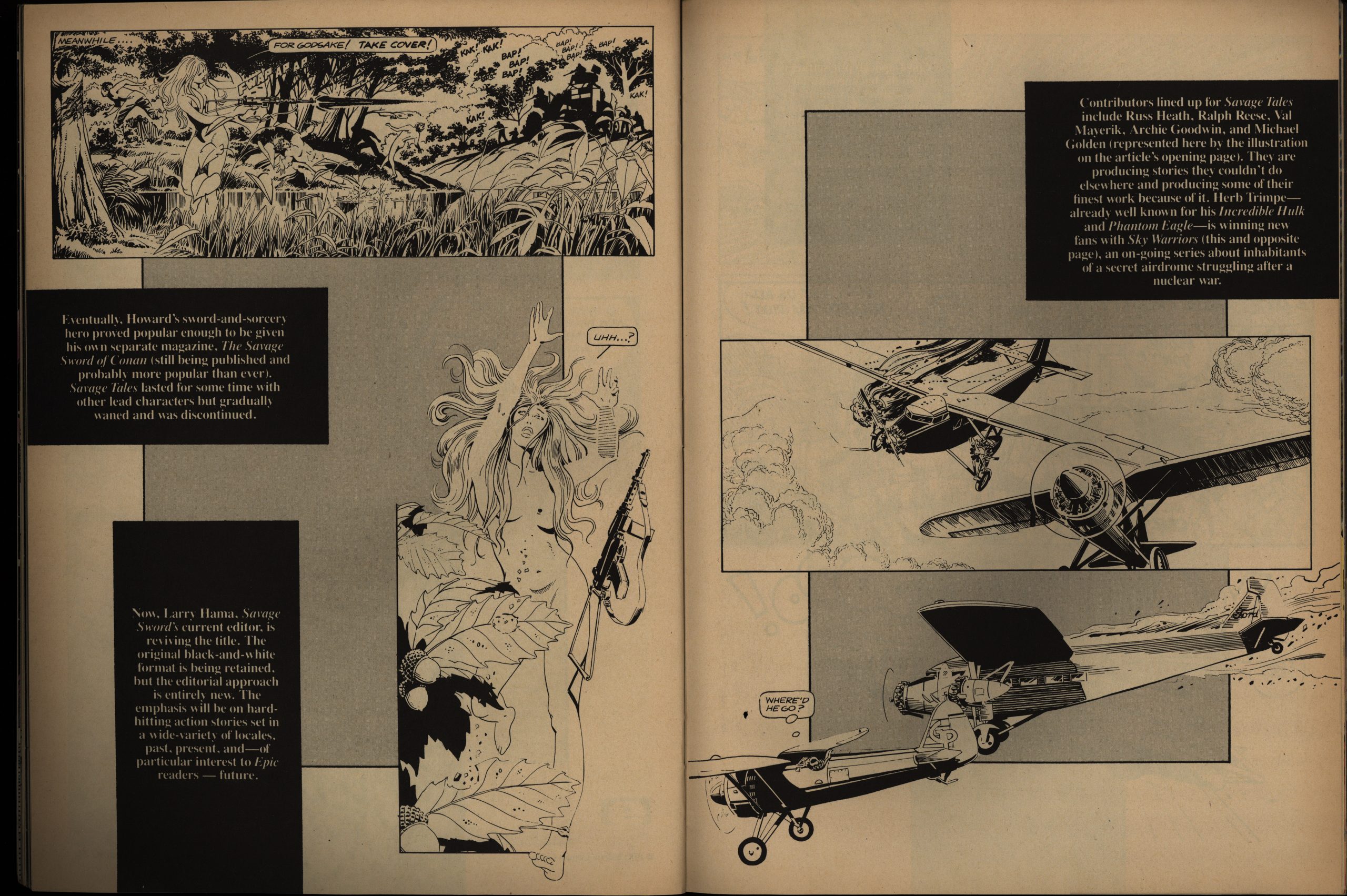
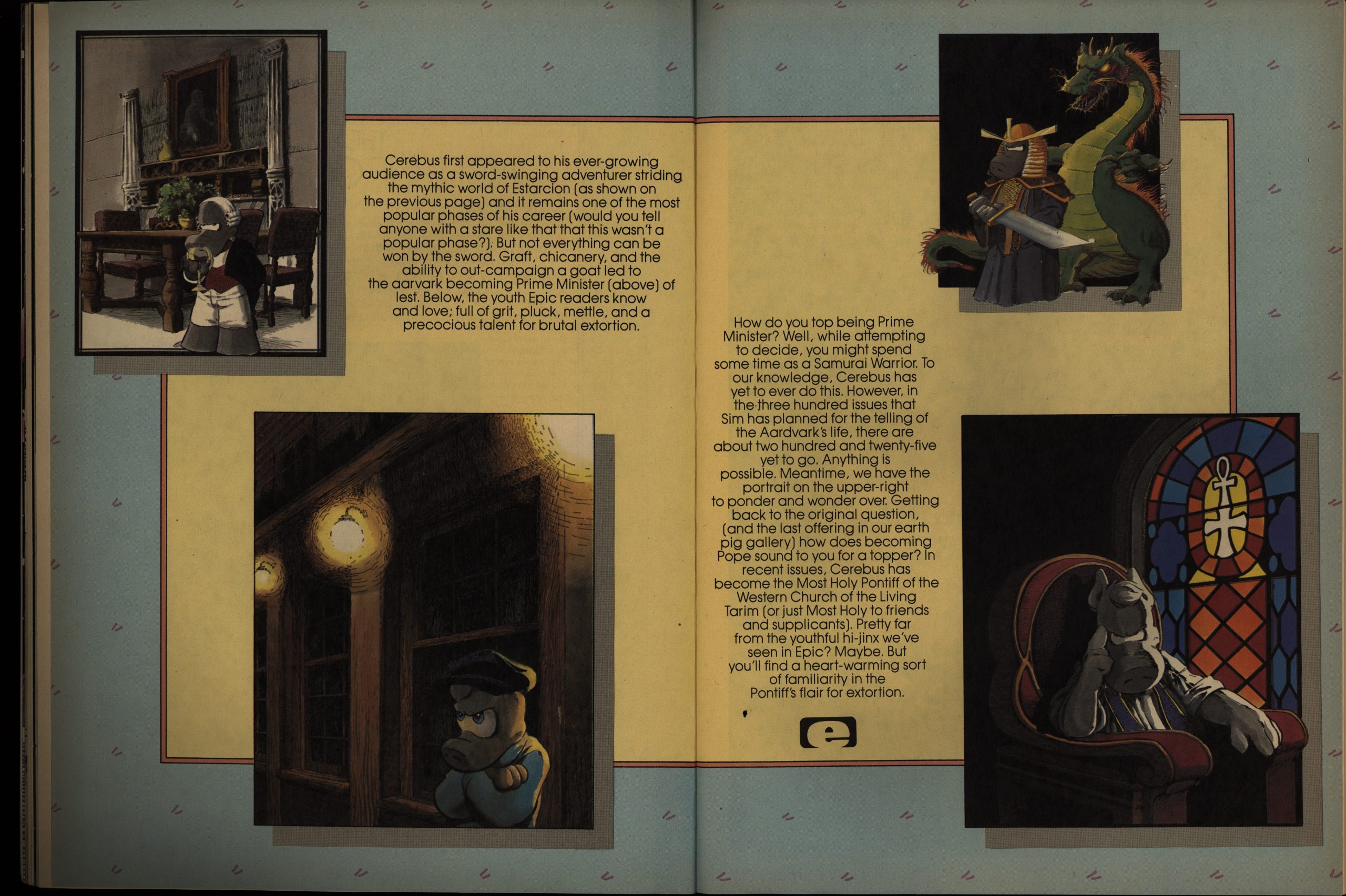
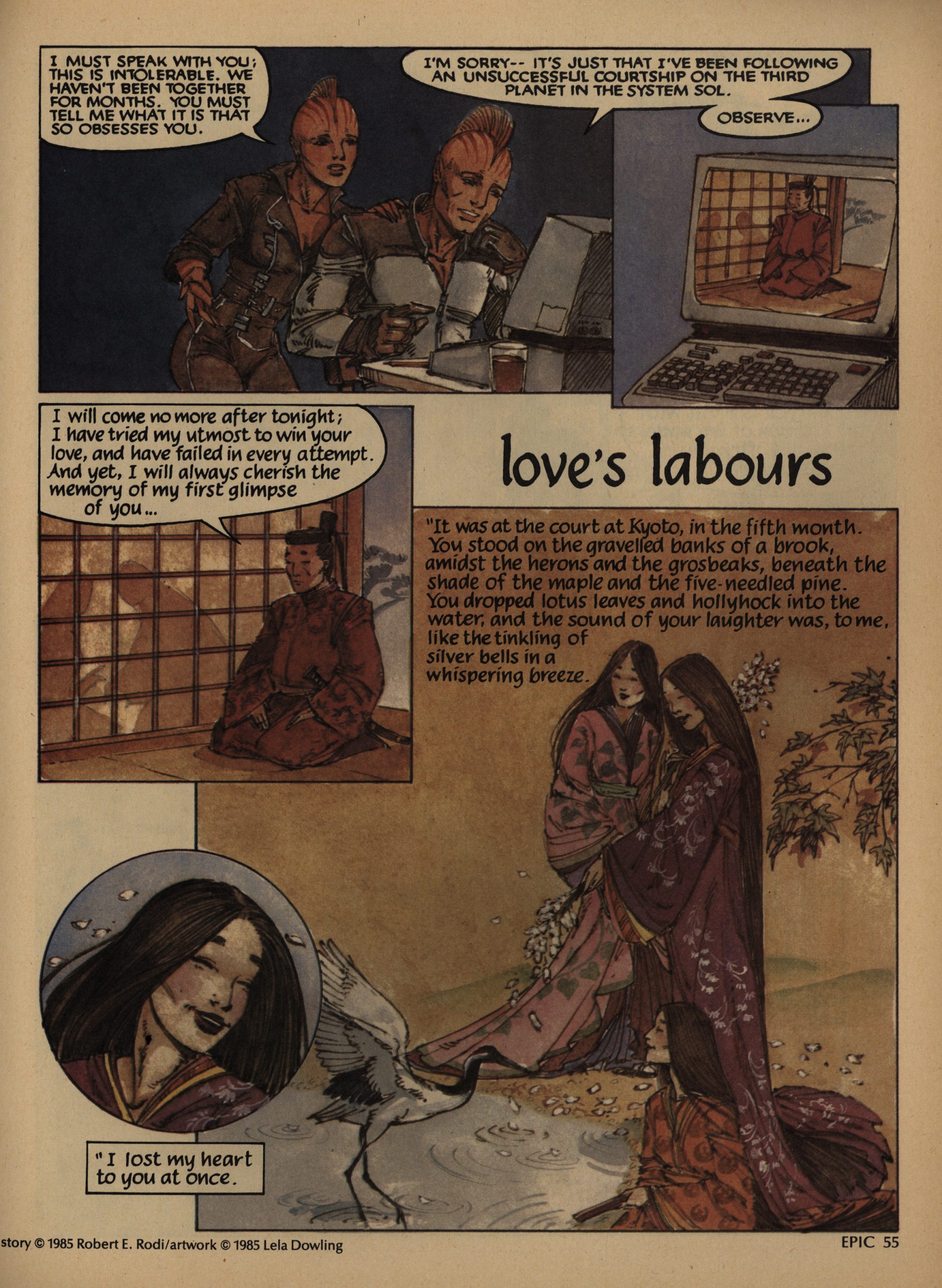

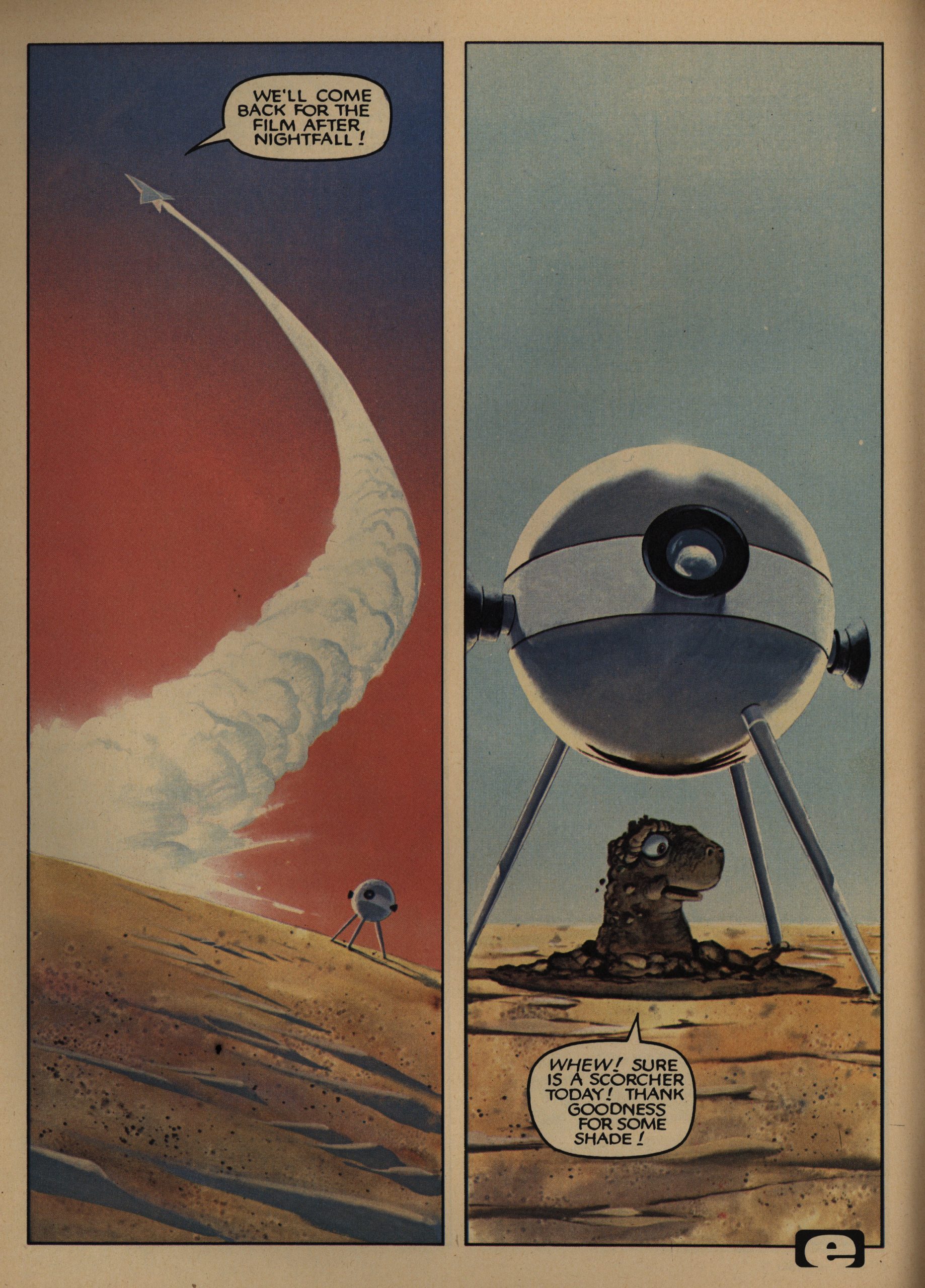
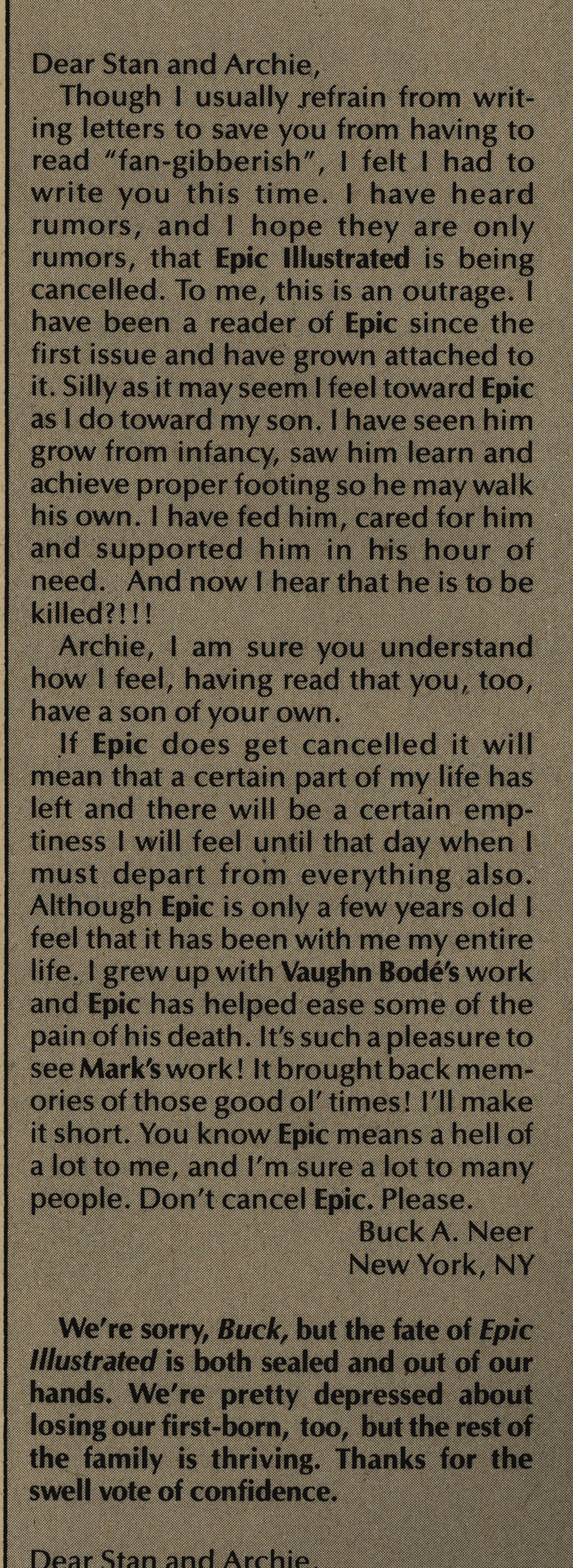
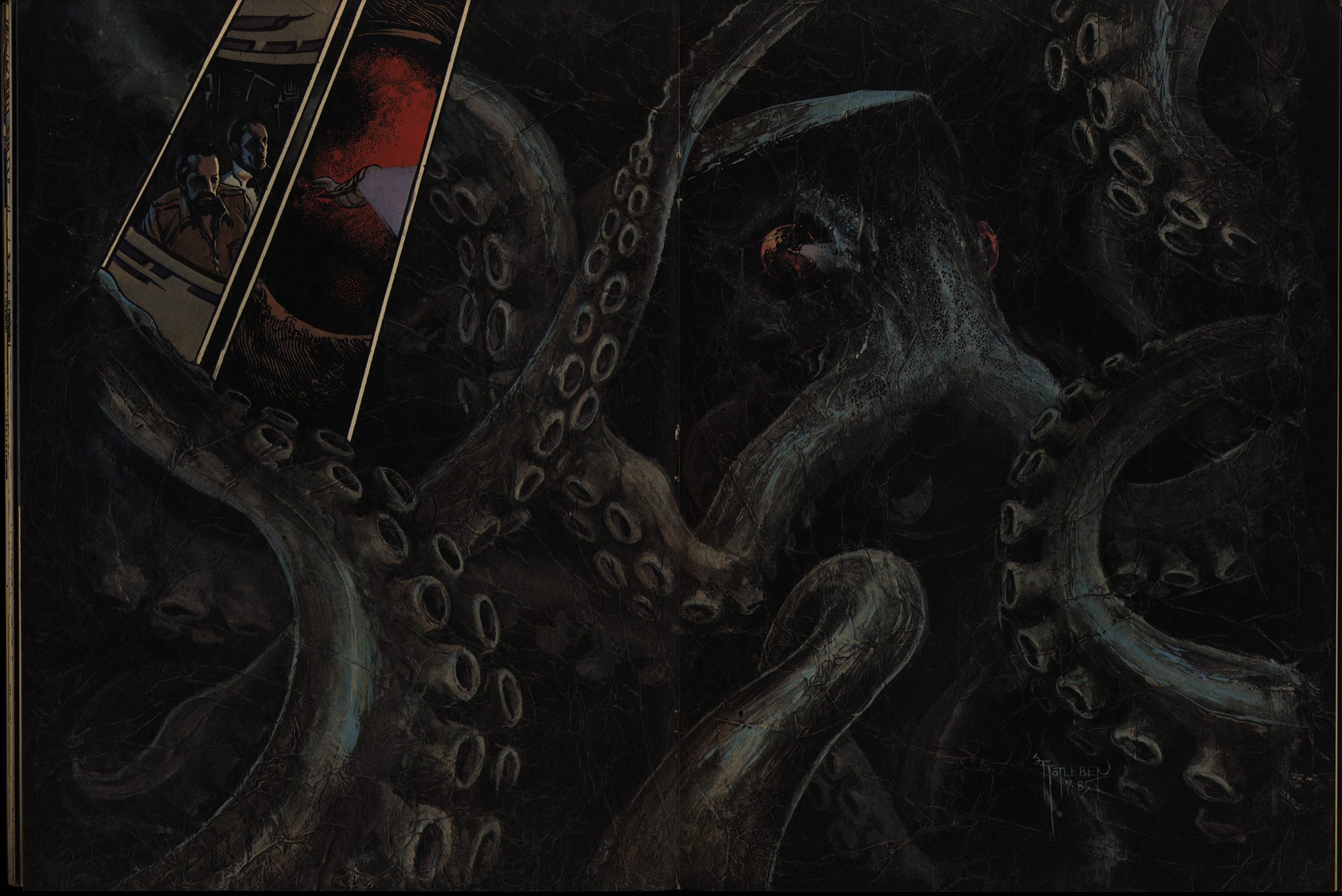
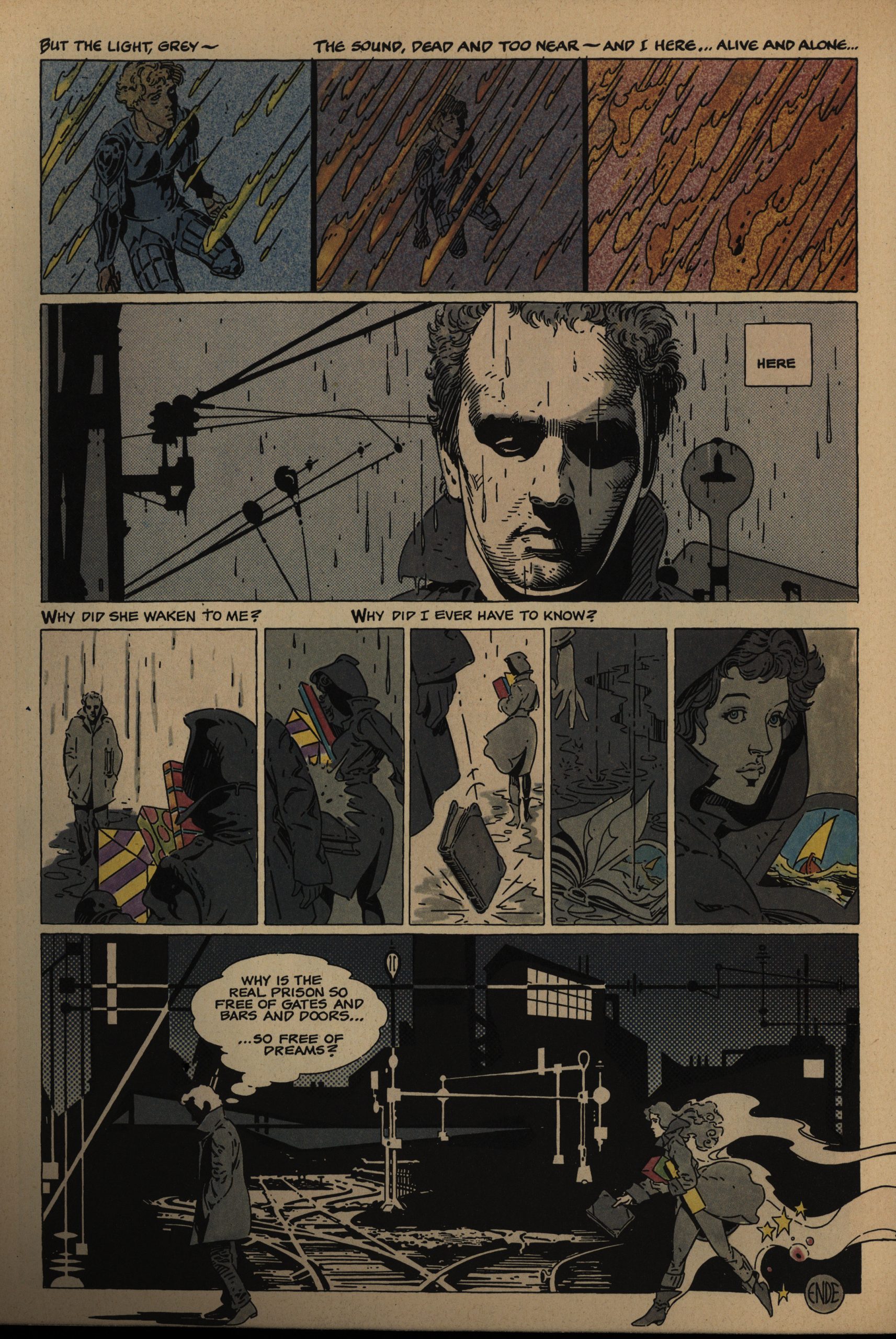
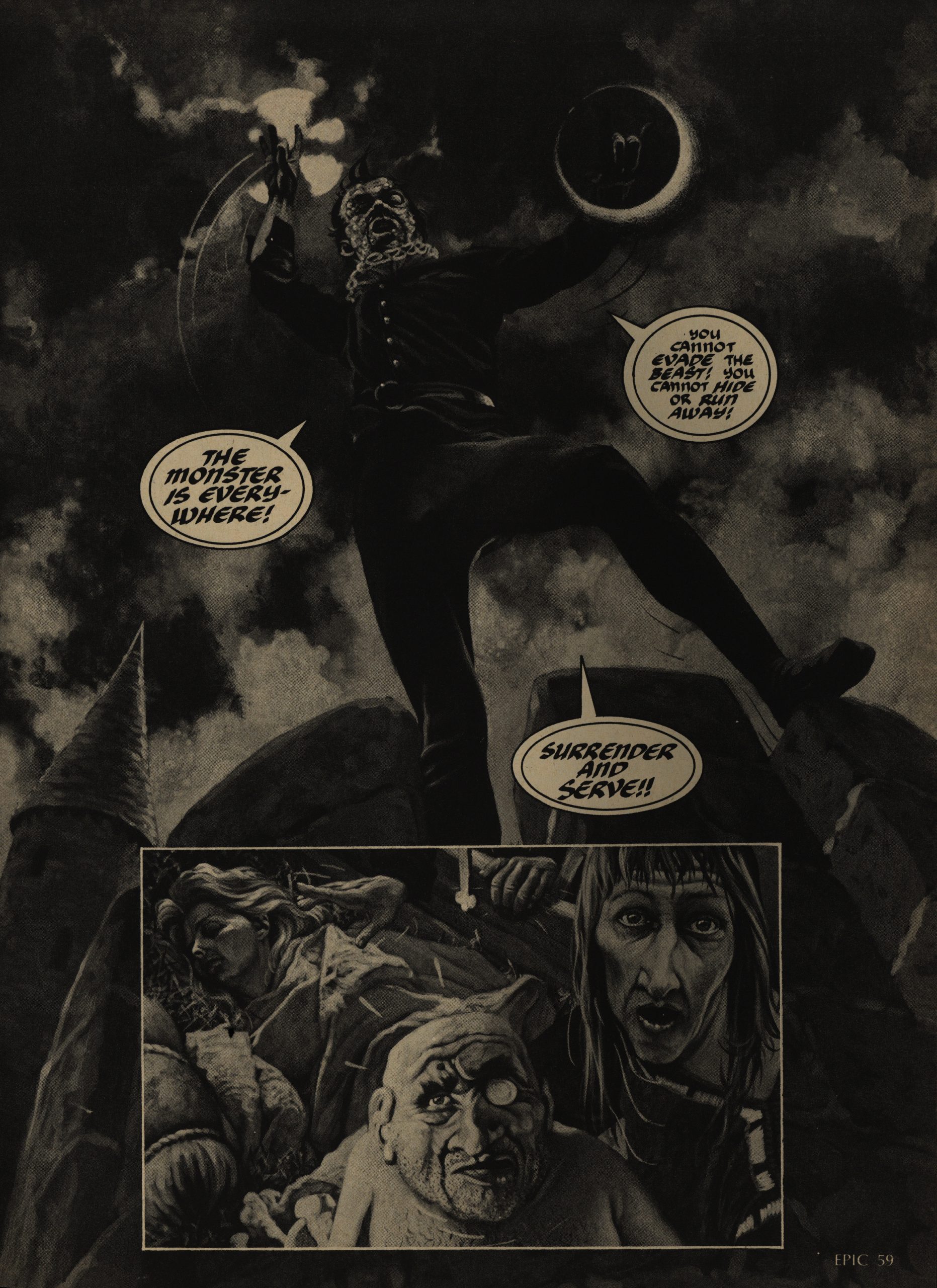
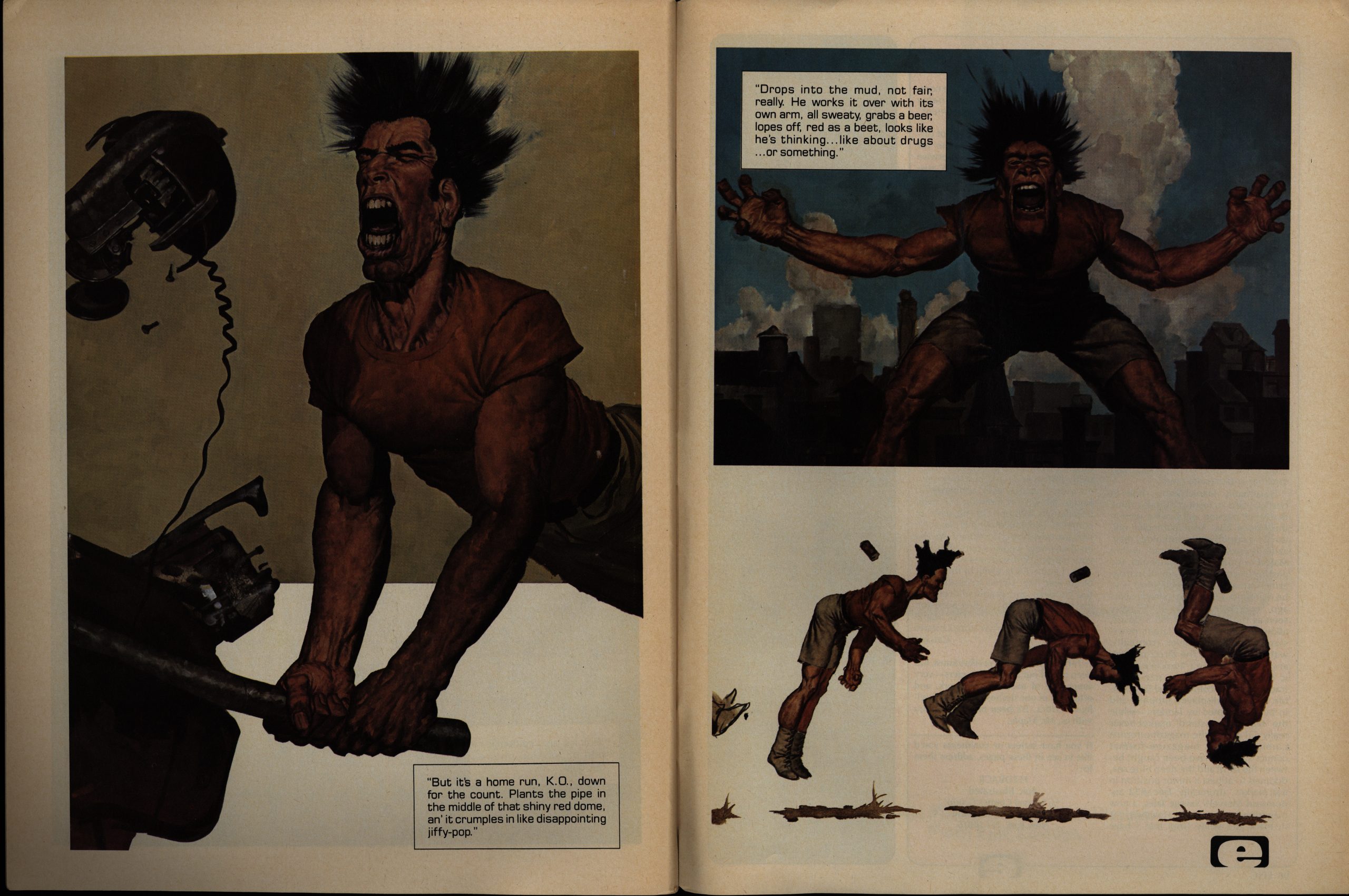
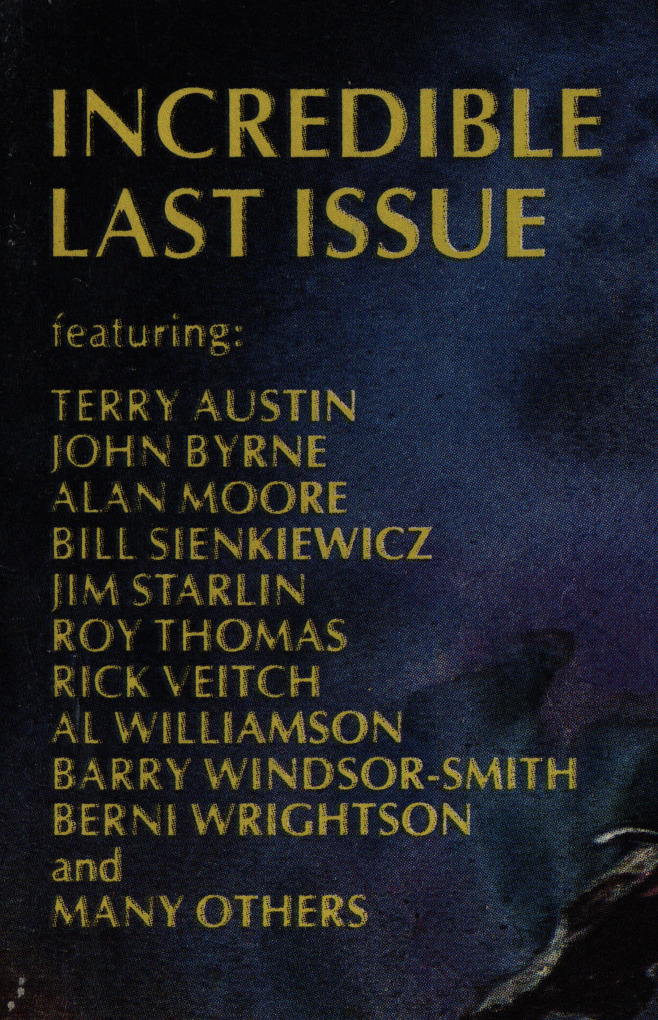
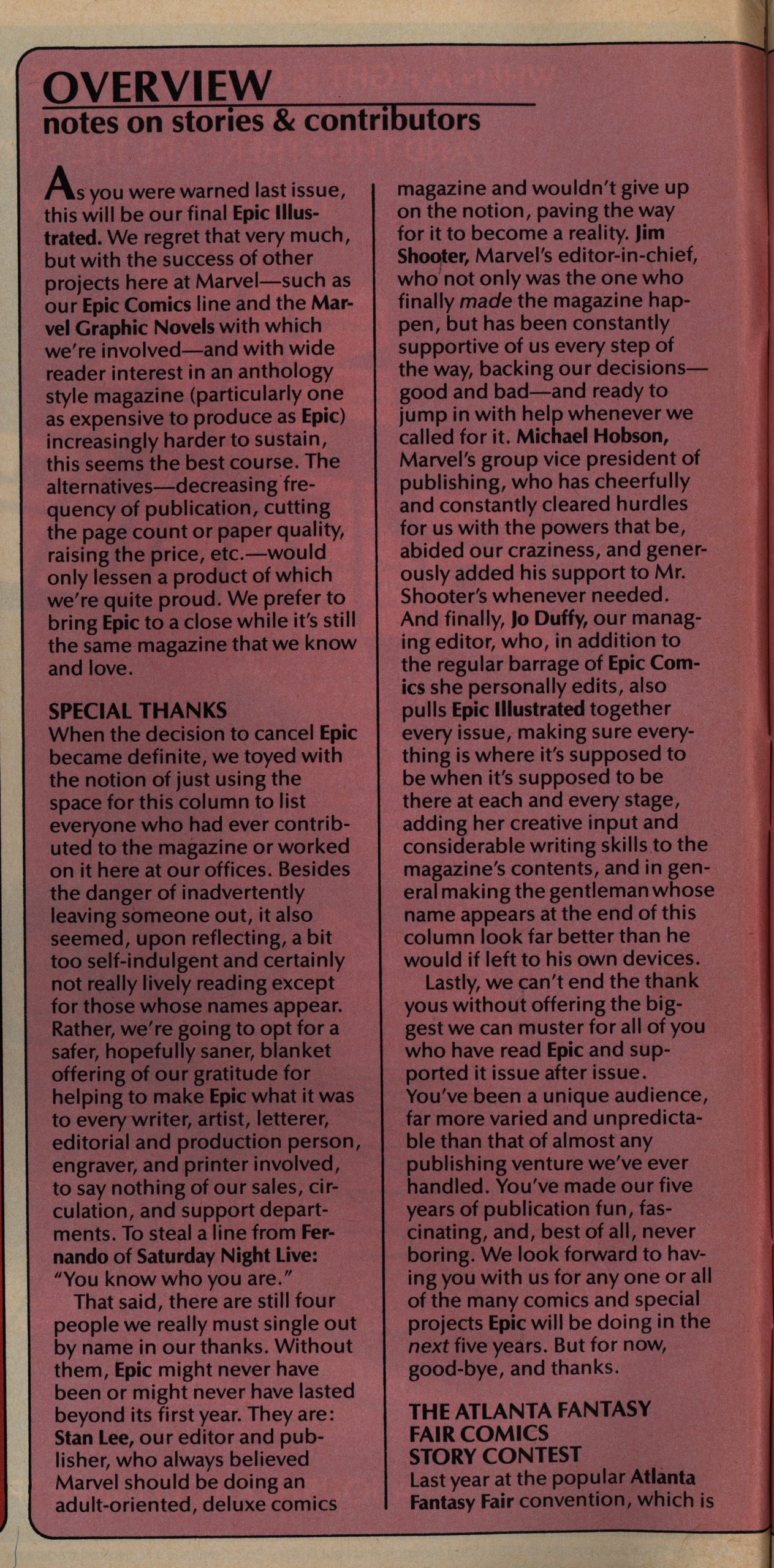

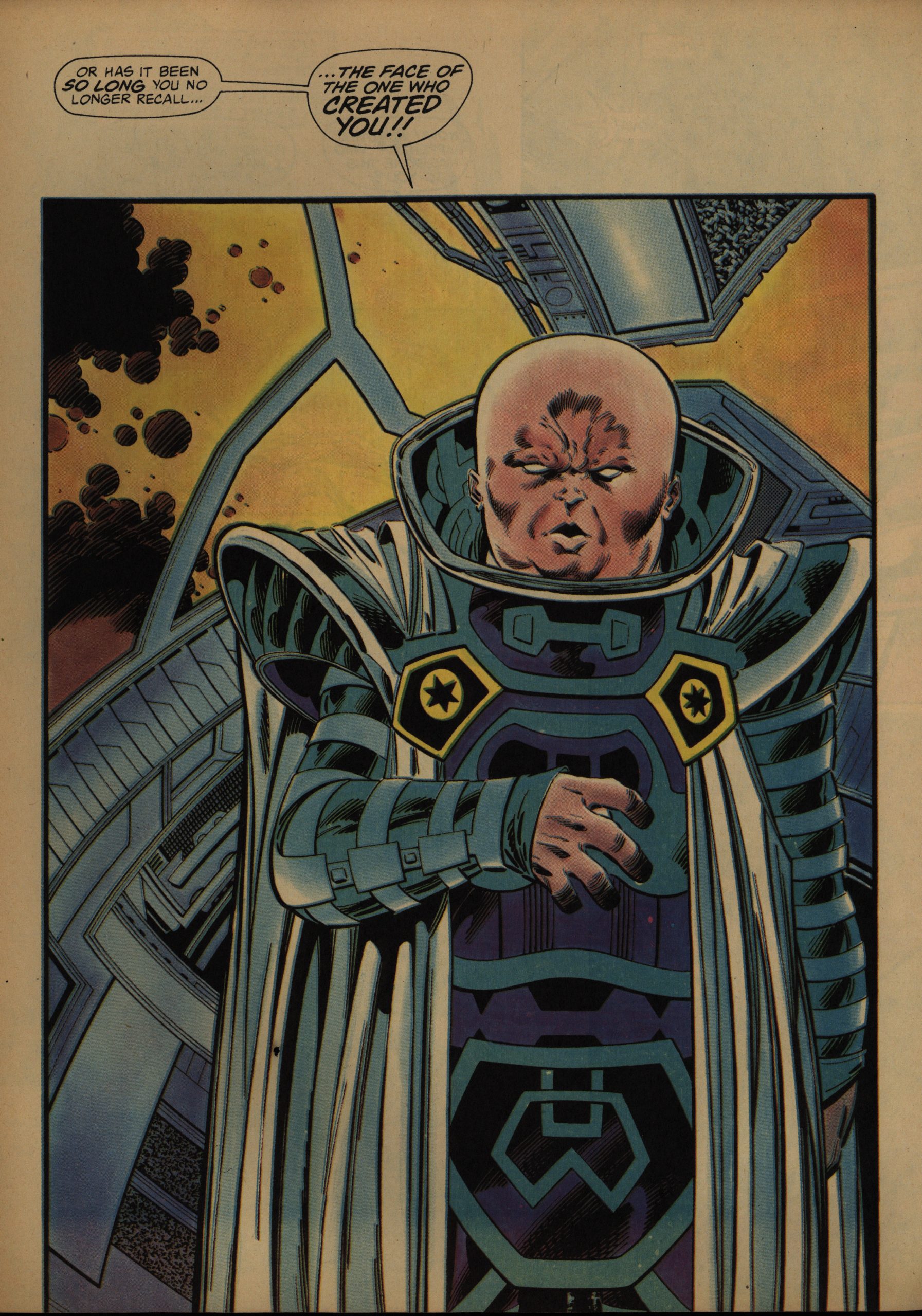
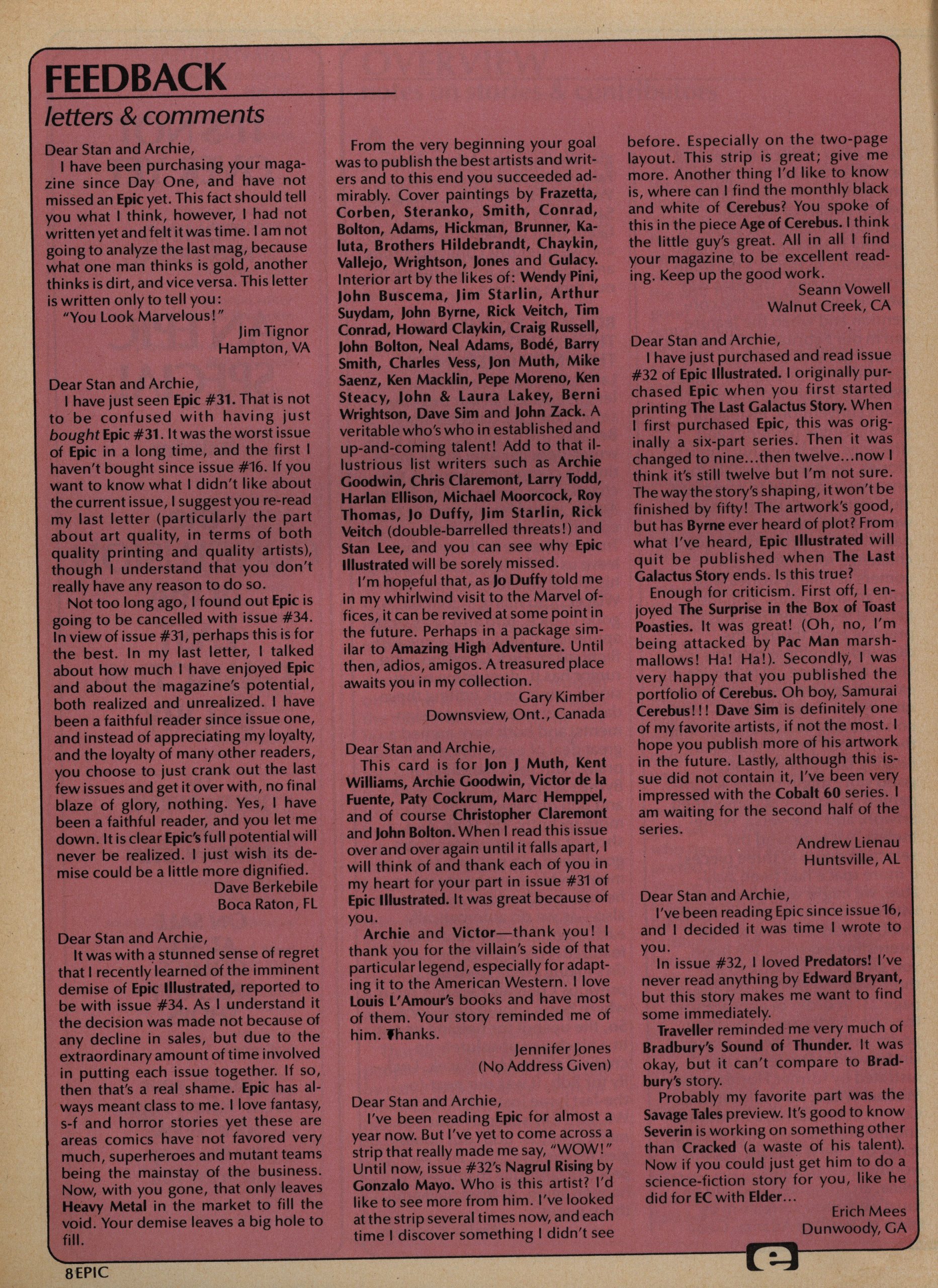
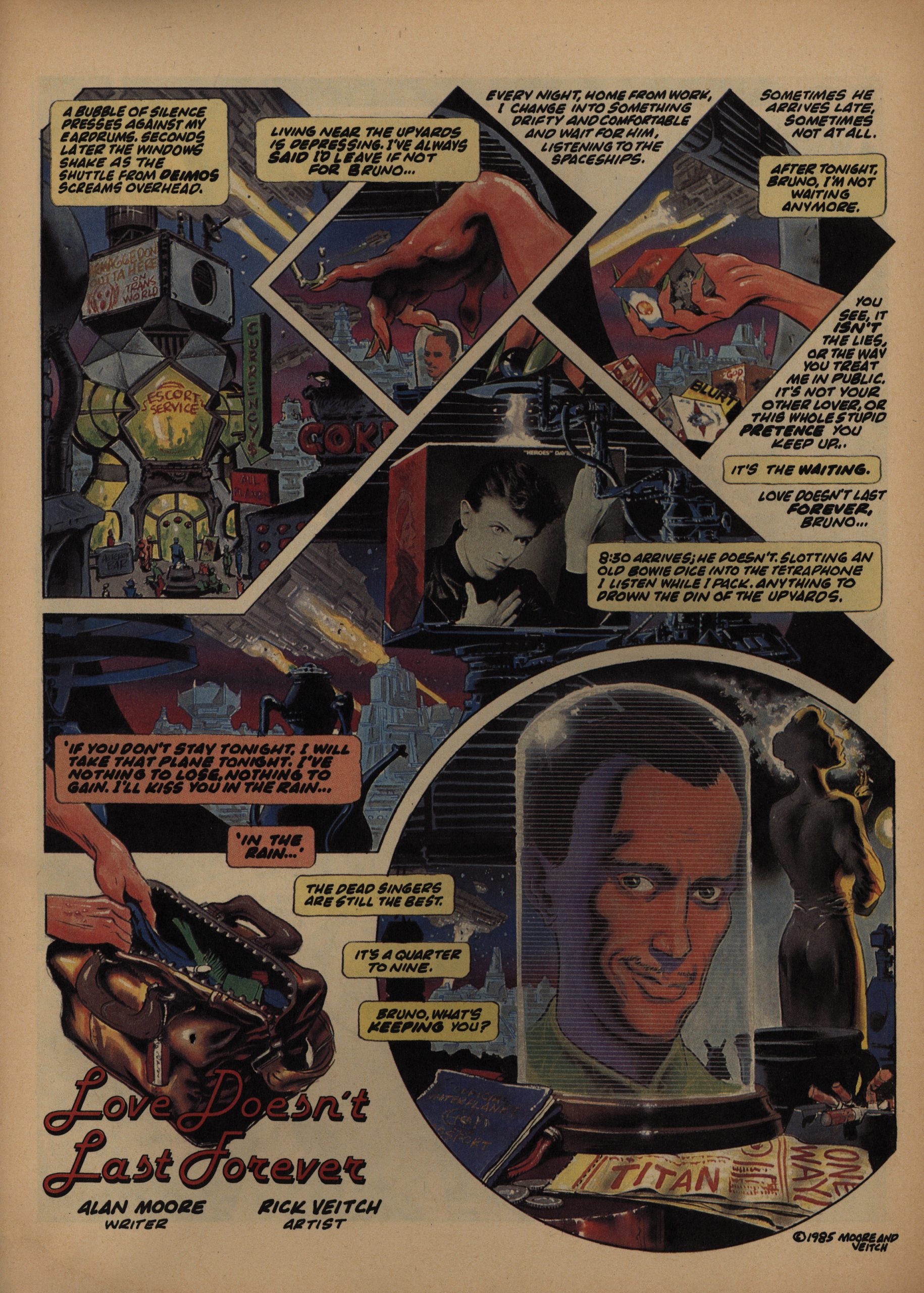
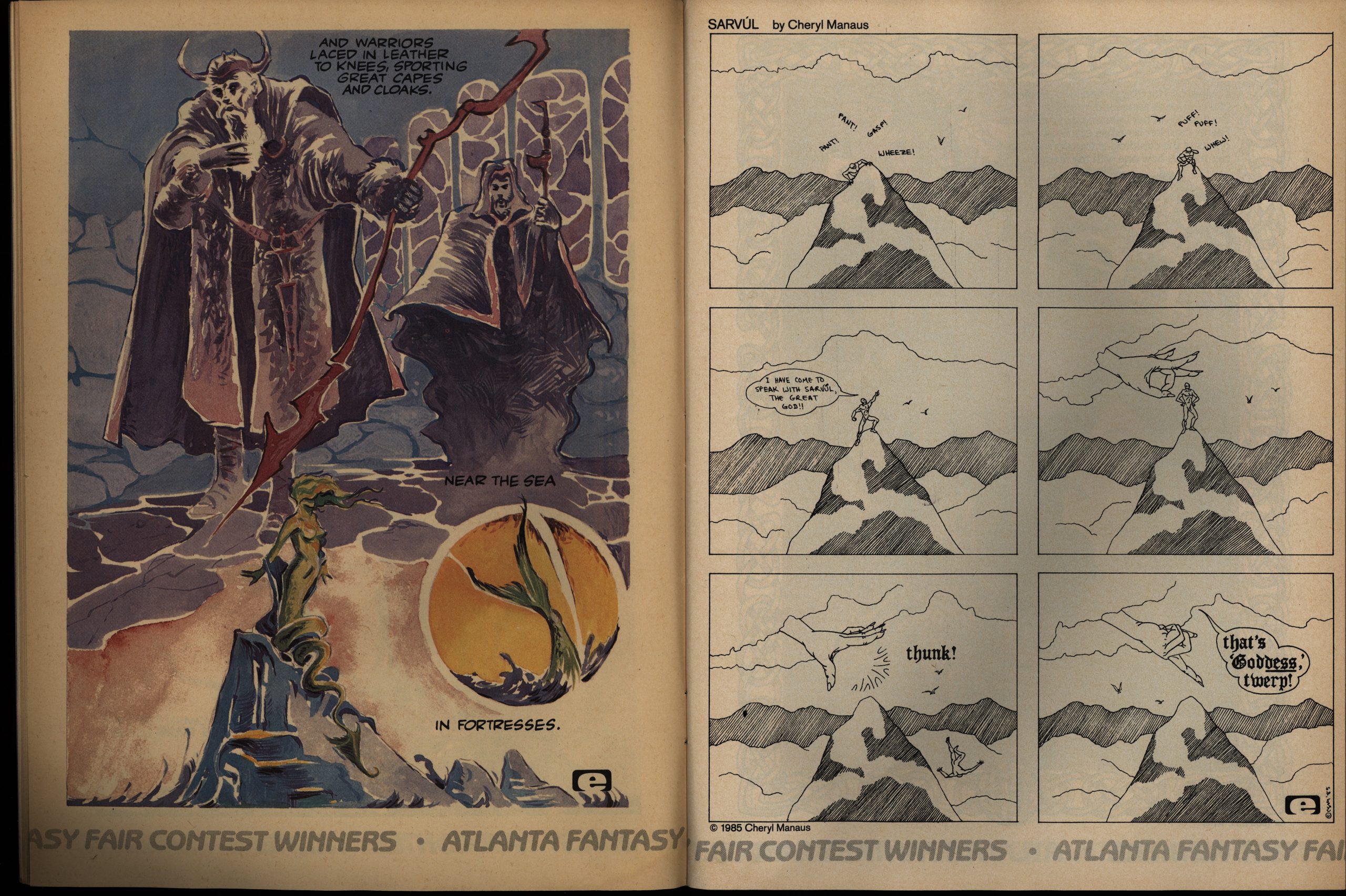
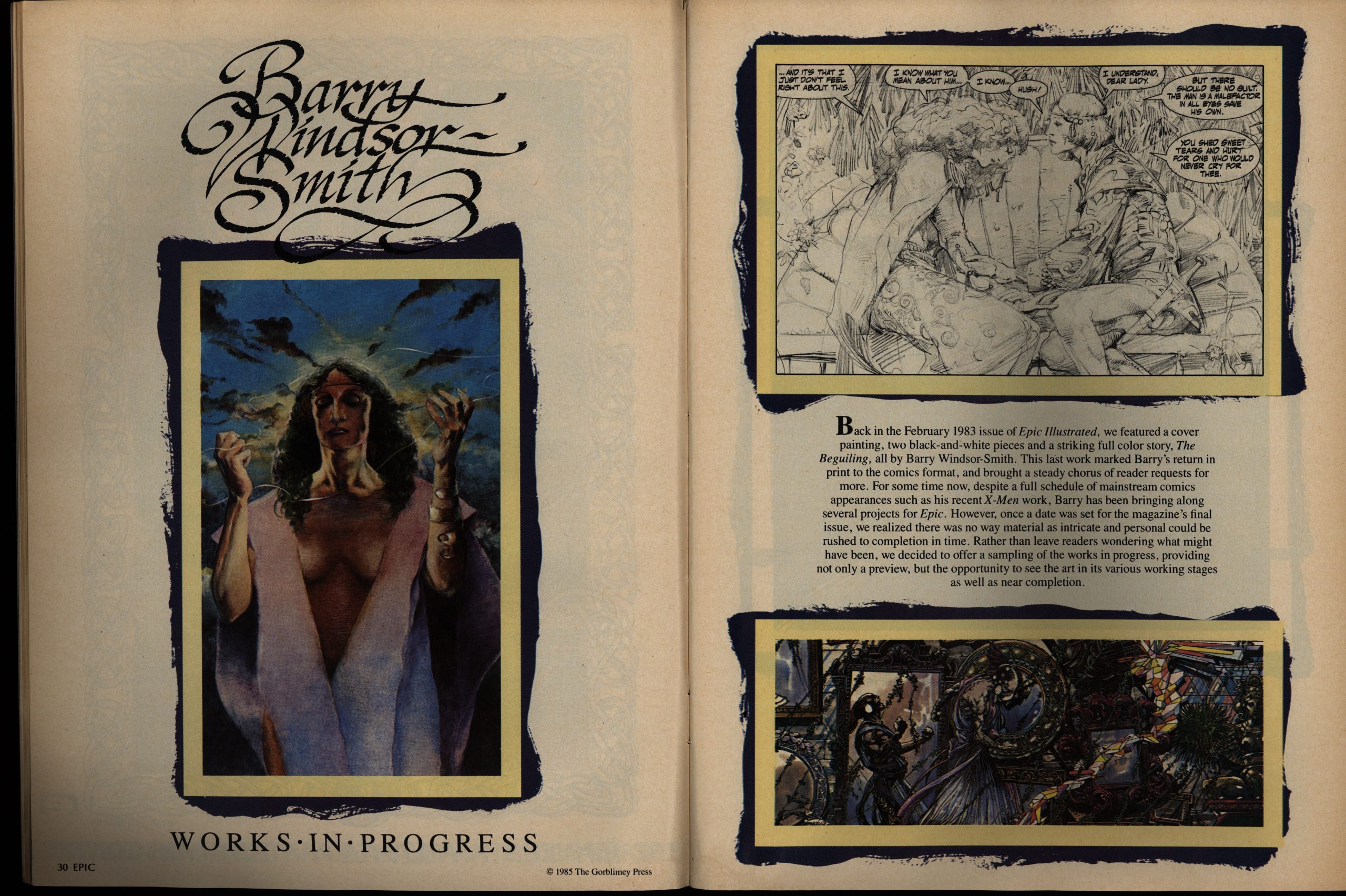
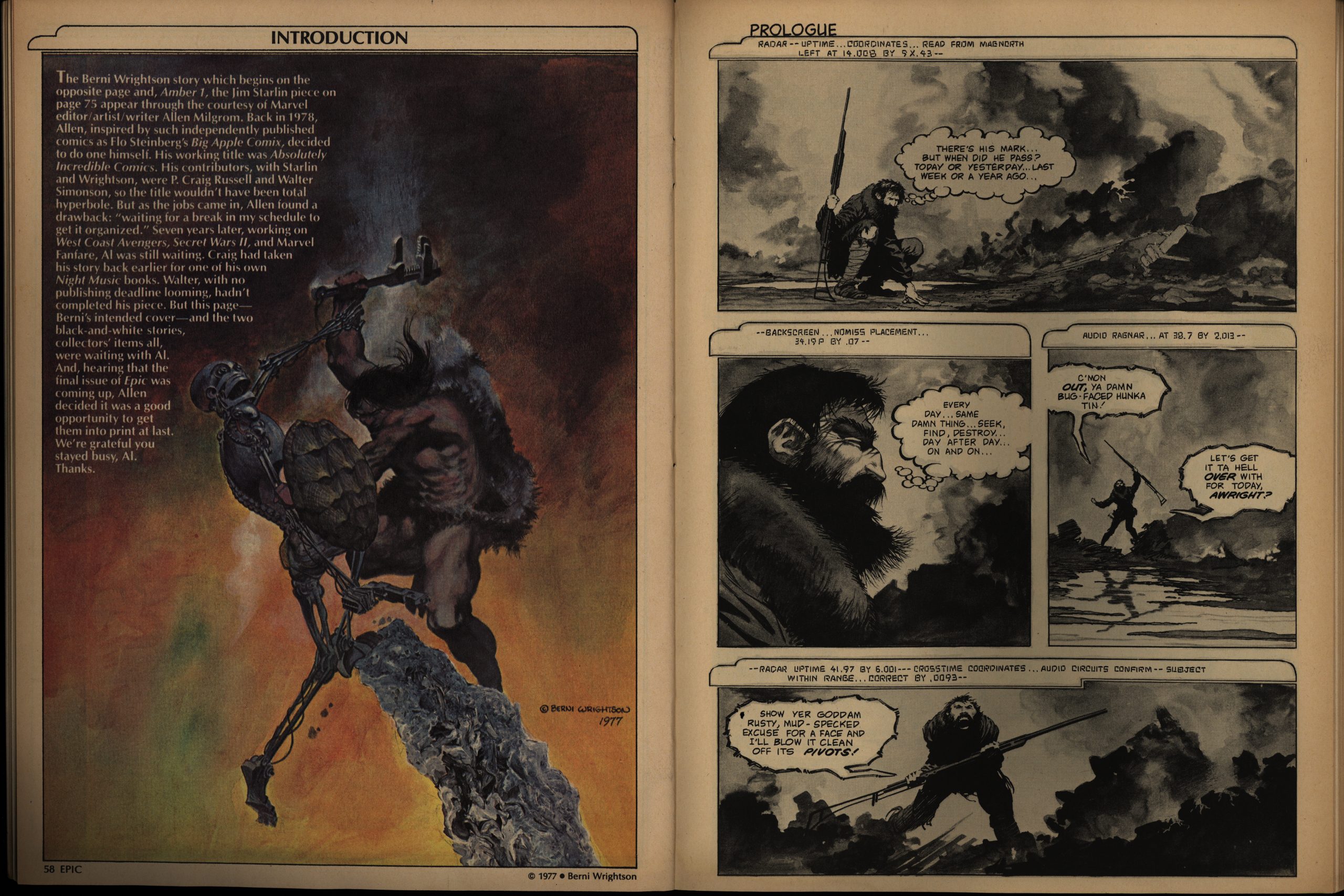

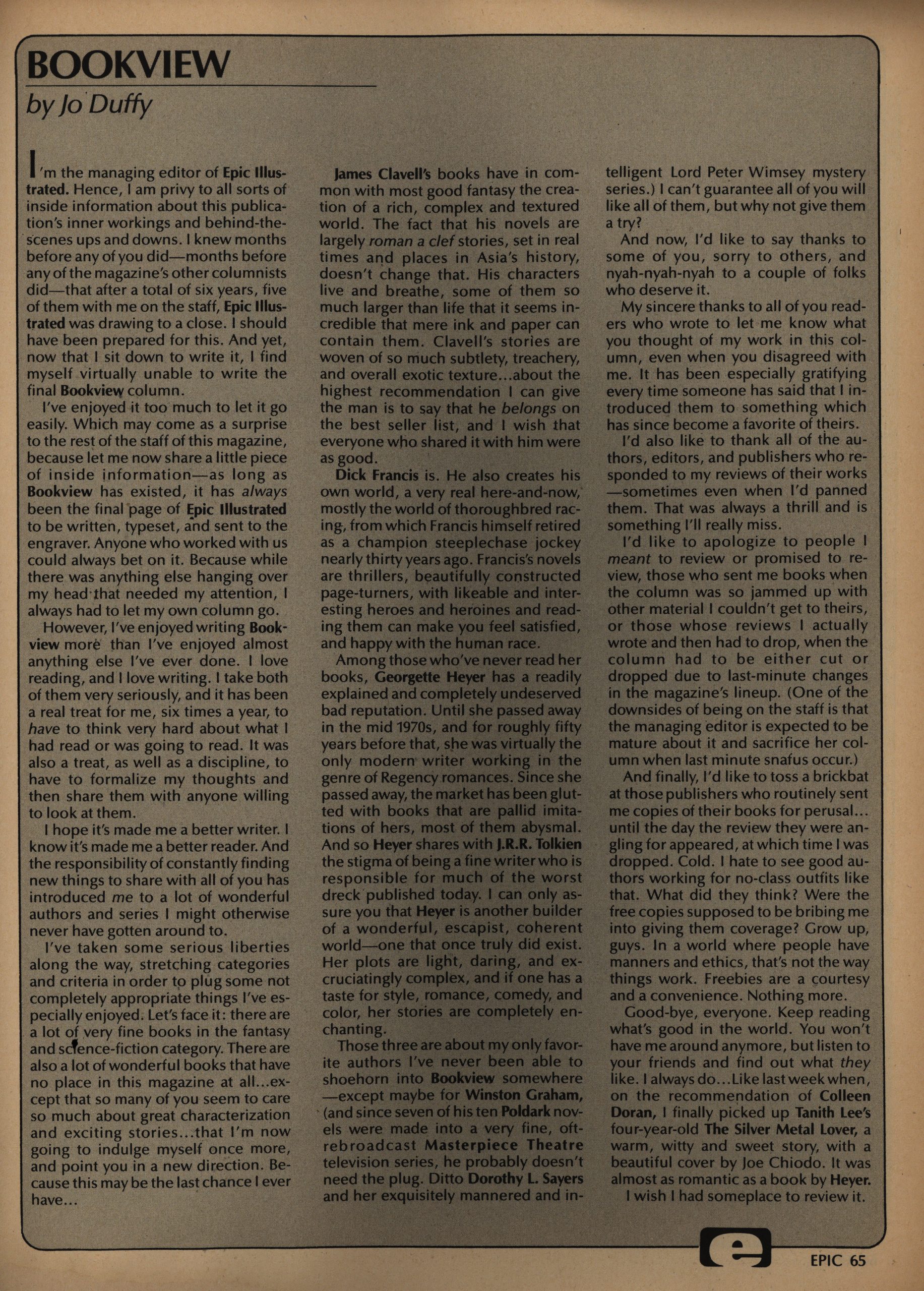
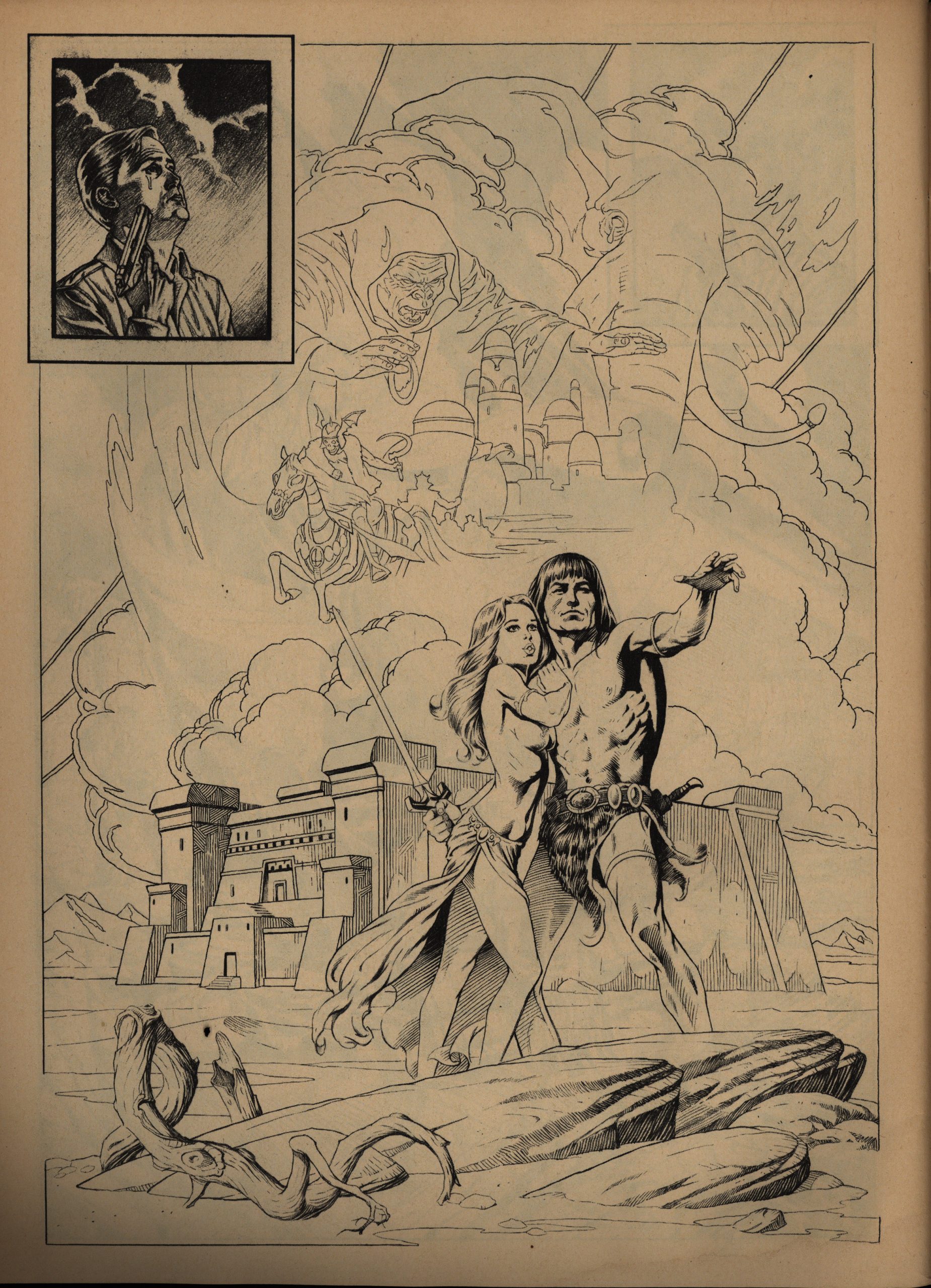
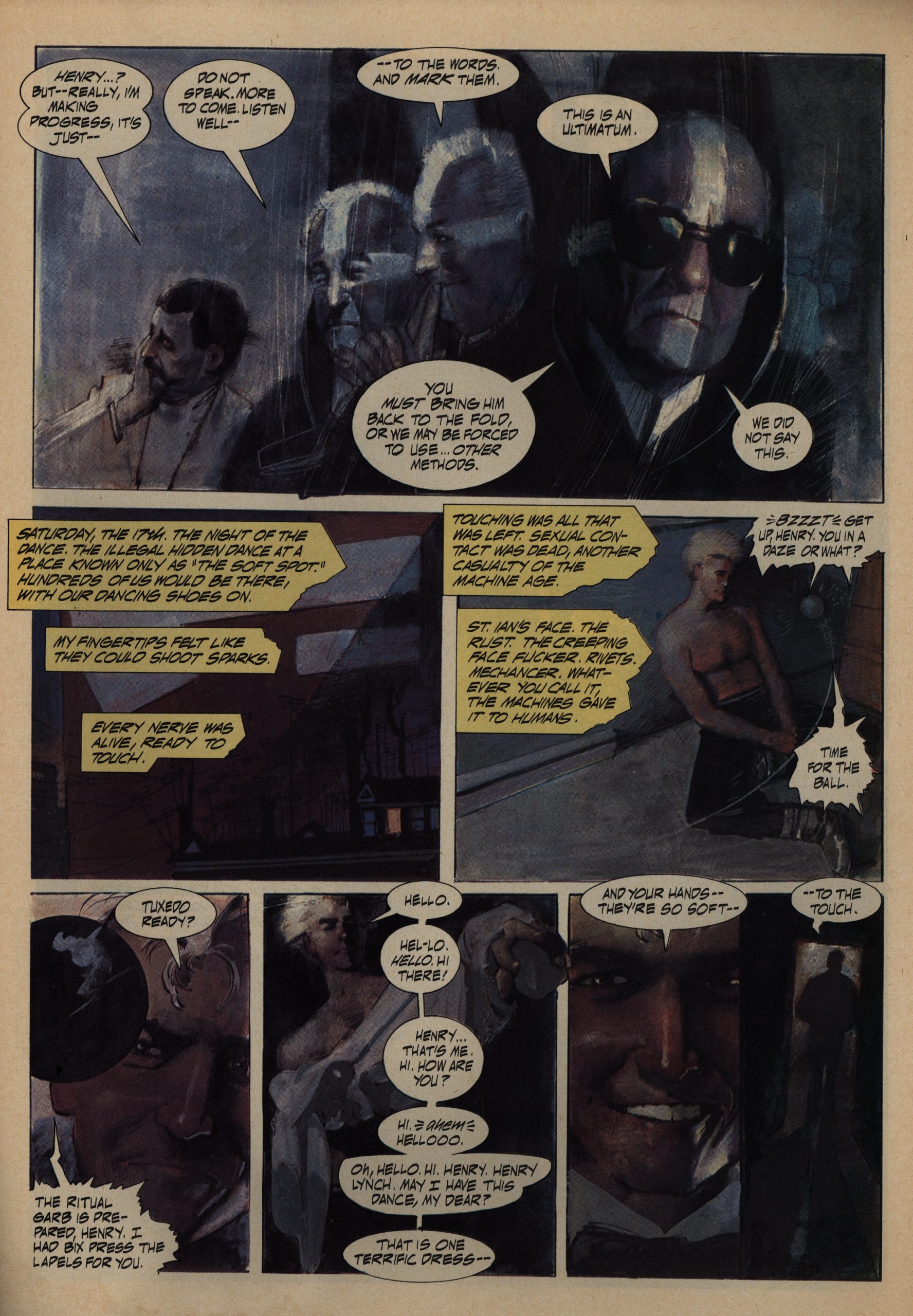
Just stumbled across your blog while in the middle of my own ‘ill-advised EPIC read-a-thon’.
I had read Epic Illustrated a few decades ago, but I have no intention of re-reading these. Your summaries have been great to remind me of the content and your analysis (from what I remember) are spot on. So many of these have clearly been forgettable, but one that has stuck with me for the fun/weirdness (as opposed to just incomprehensible/weirdness) was Abraxas and the Earthman. I may have to find a collected version of that one.
Thank you so much for this site. I can’t tell you how much I’m enjoying dipping into it from time to time. Growing up I always loved Epic Illustrated, and treasured the few copies I was able to acquire then. And I was always intensely interested in the other Epic titles, though could never afford them. So again, thank you for this deep dive.
See, I bought and enjoyed many of these issues from when i was circa 15 16 or so, as already feeling getting too old for comics, I liked their Heavy Metalish quality. Though i was certain a Serpieri would never disgrace the pages of a Stan Lee concern, I have been trying to rate that sense of felling of painted newsprint in my own latest comics, so looked up images as have been buying old Druunas from the publishers of HM itself, as a way to reinstall, I liked these issues, a first exposure to Harlan Ellison etc., and was one of the few Marvels, along with anything by Bushema that I’d buy. I felt bad knowing it was over, as anything not Spider-man or Batman by the kings of sleaze was something worth doing to my way, and when it w as gone realized sadly, there were more people willing to read Spider-man than I thought was good for the American outlook.